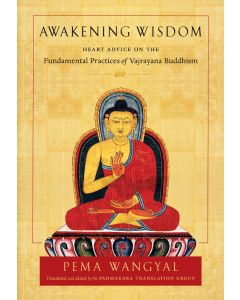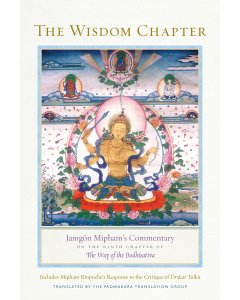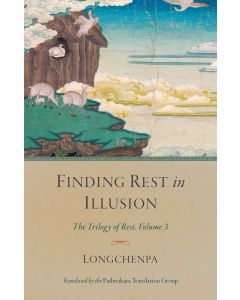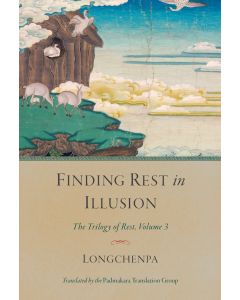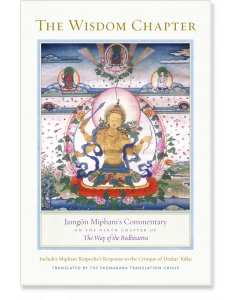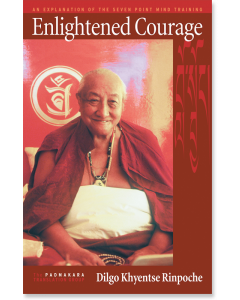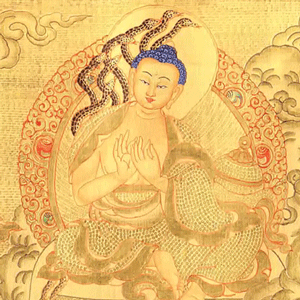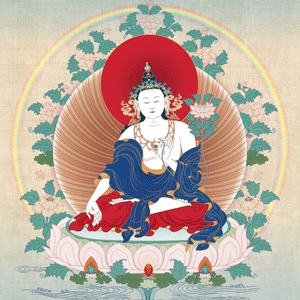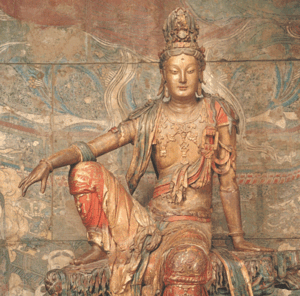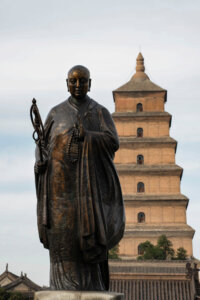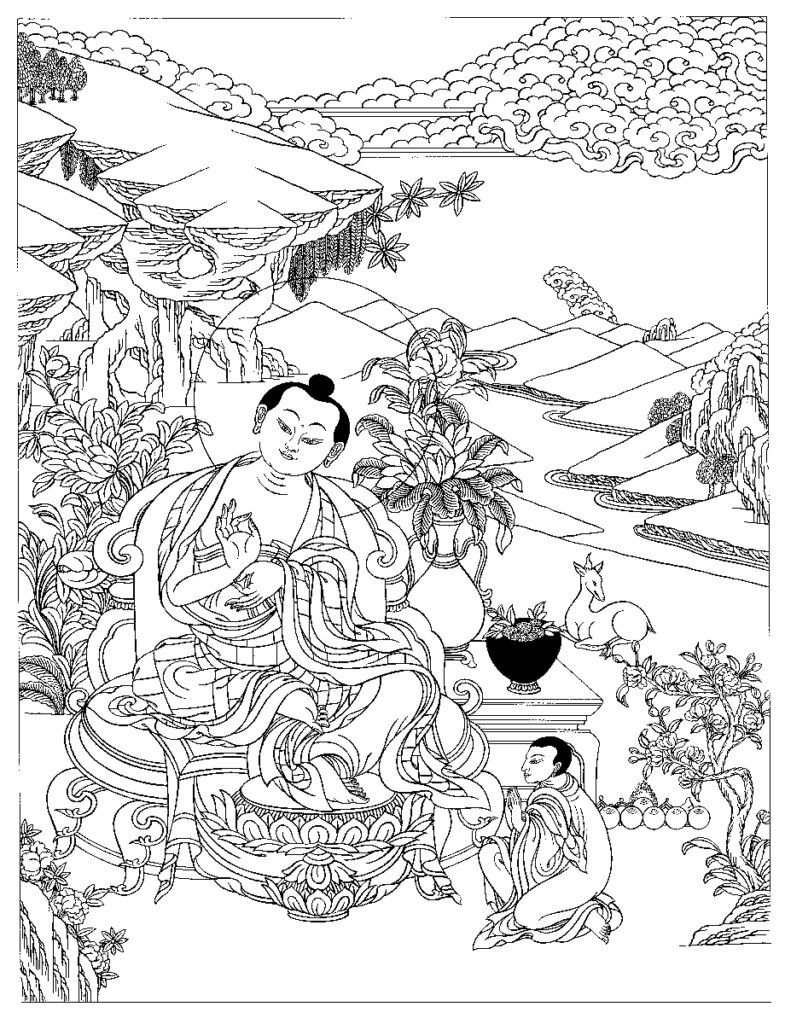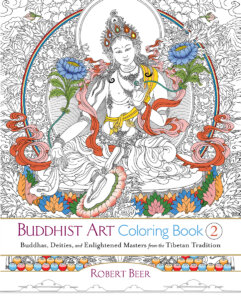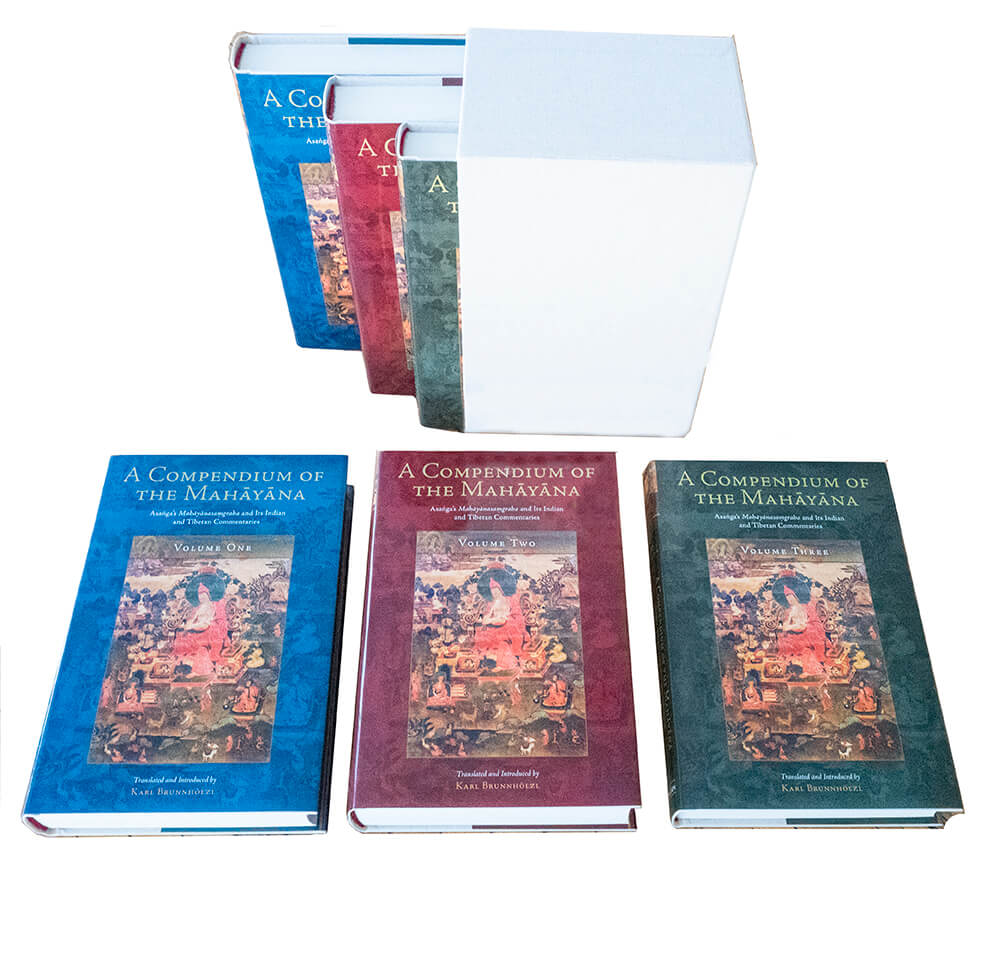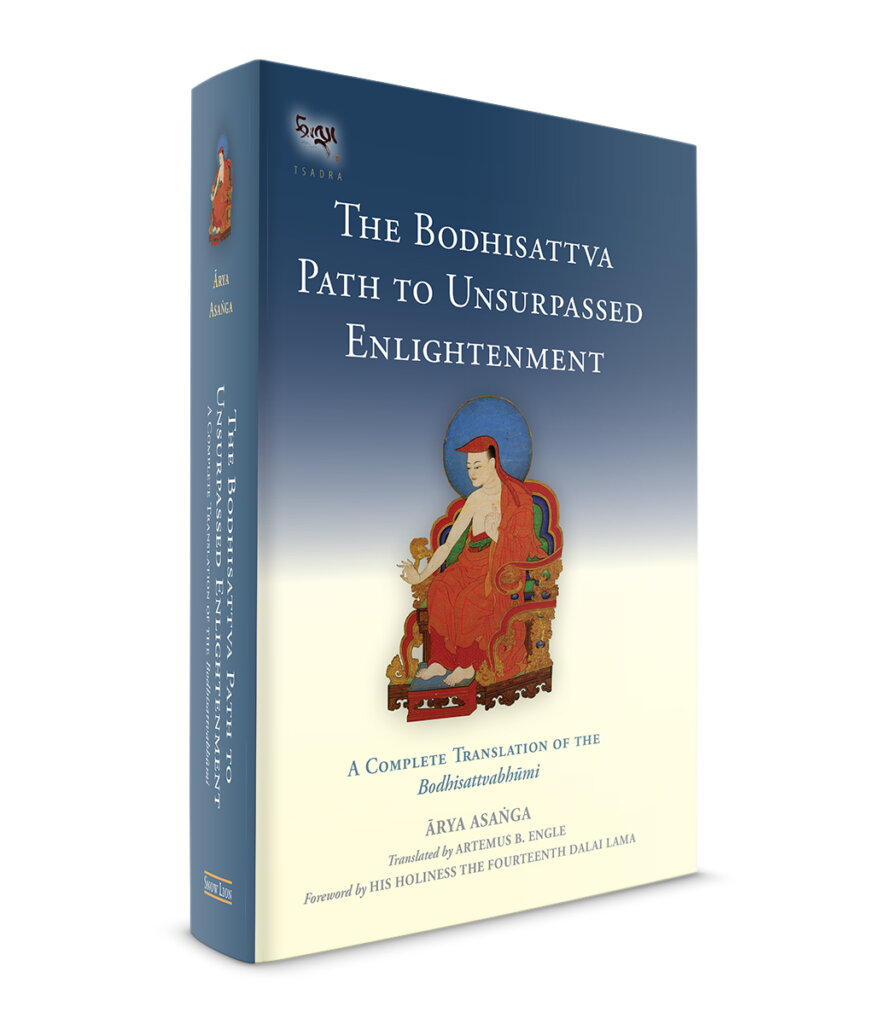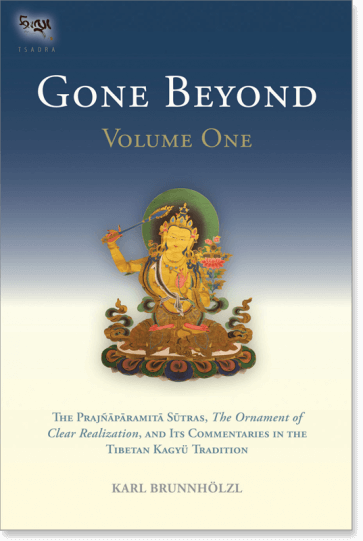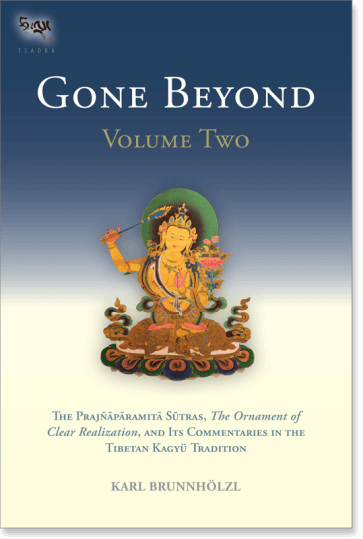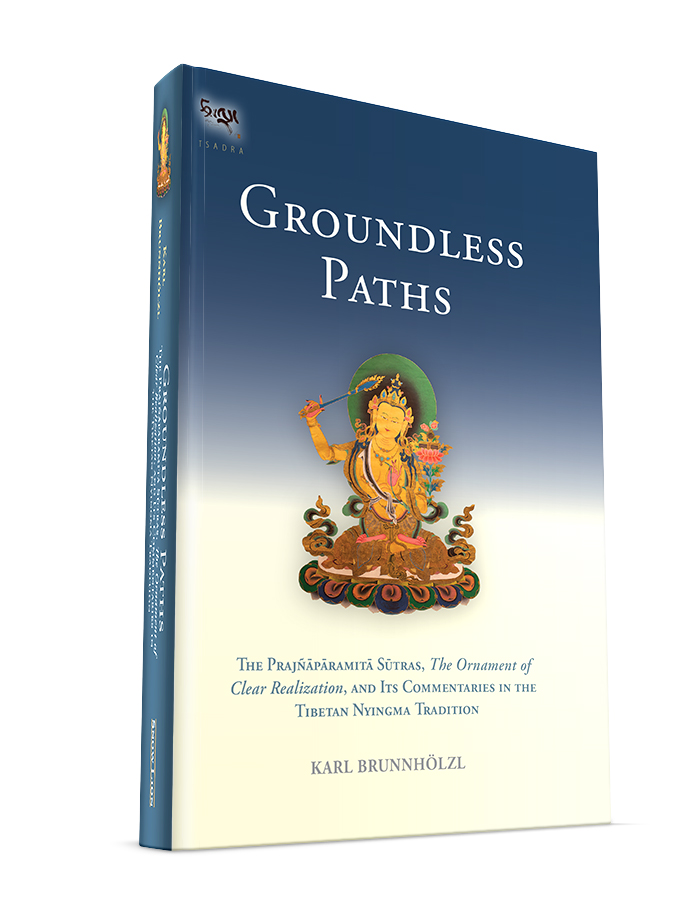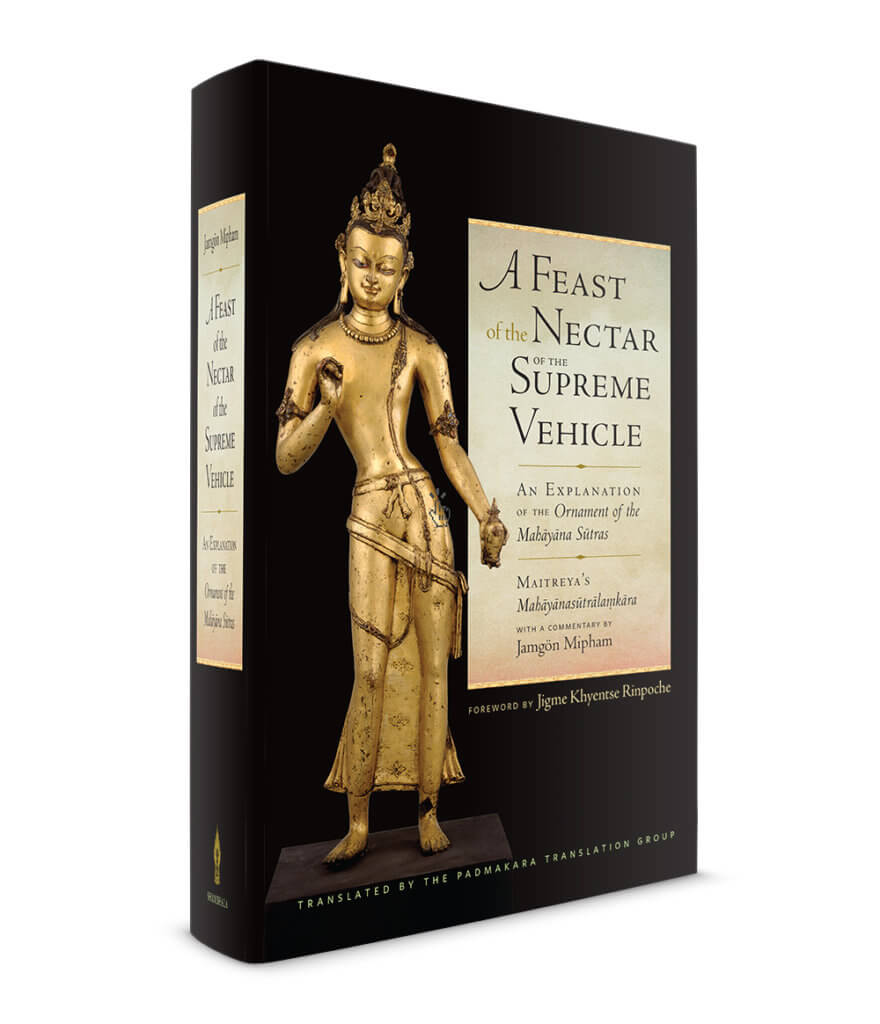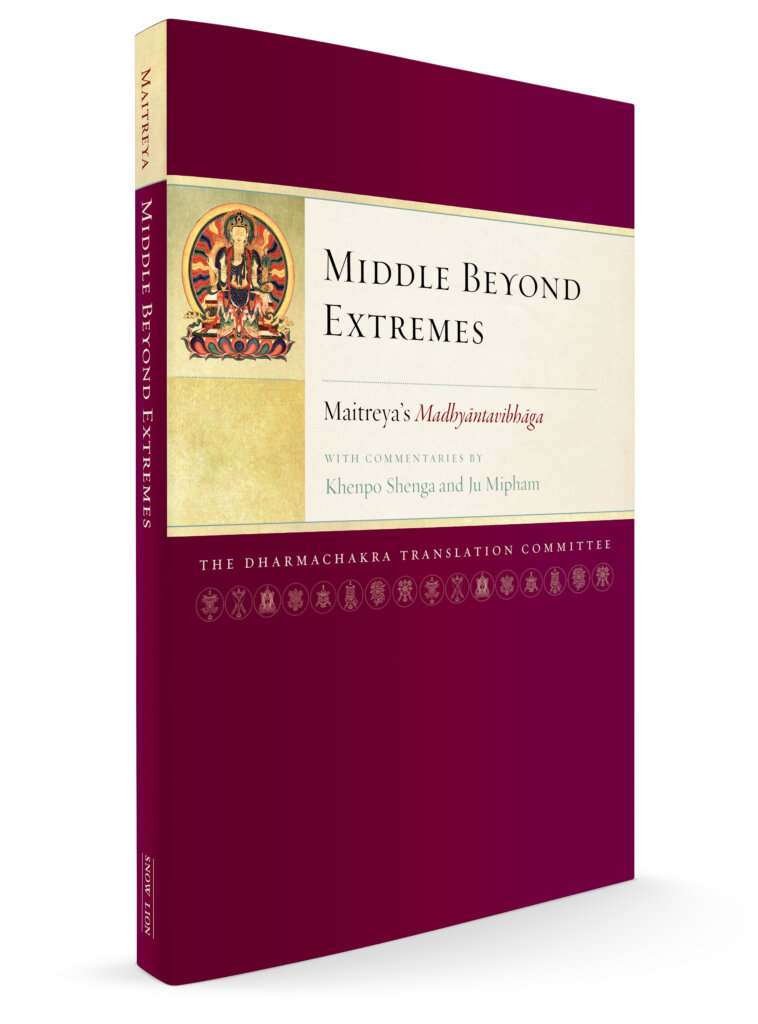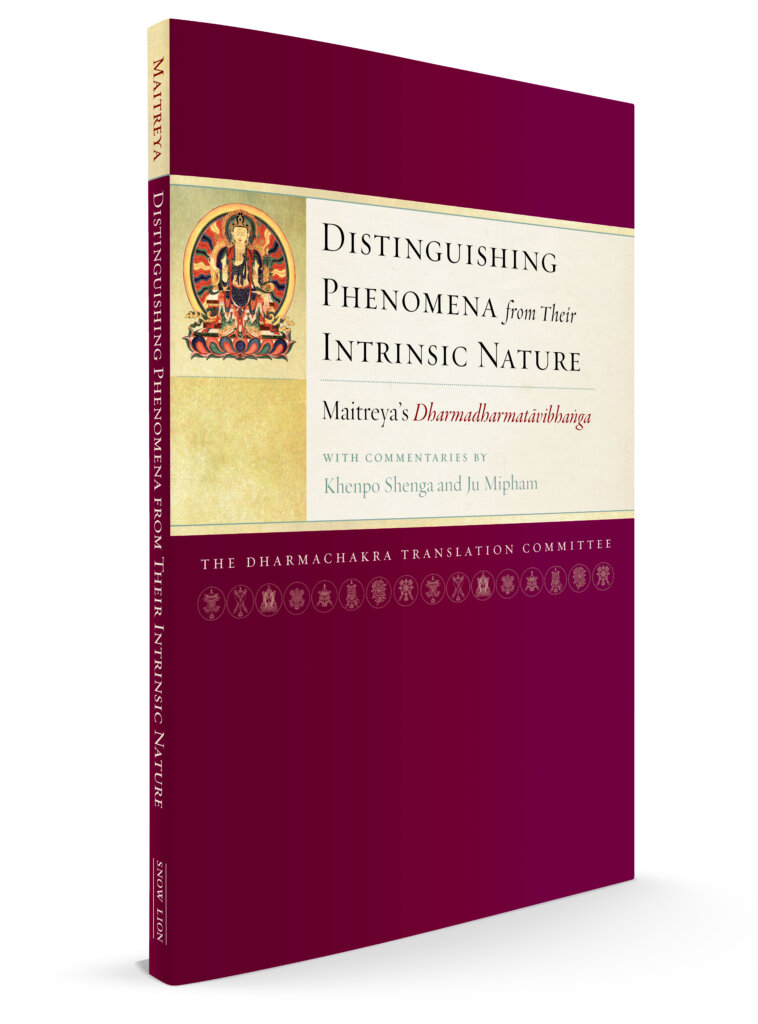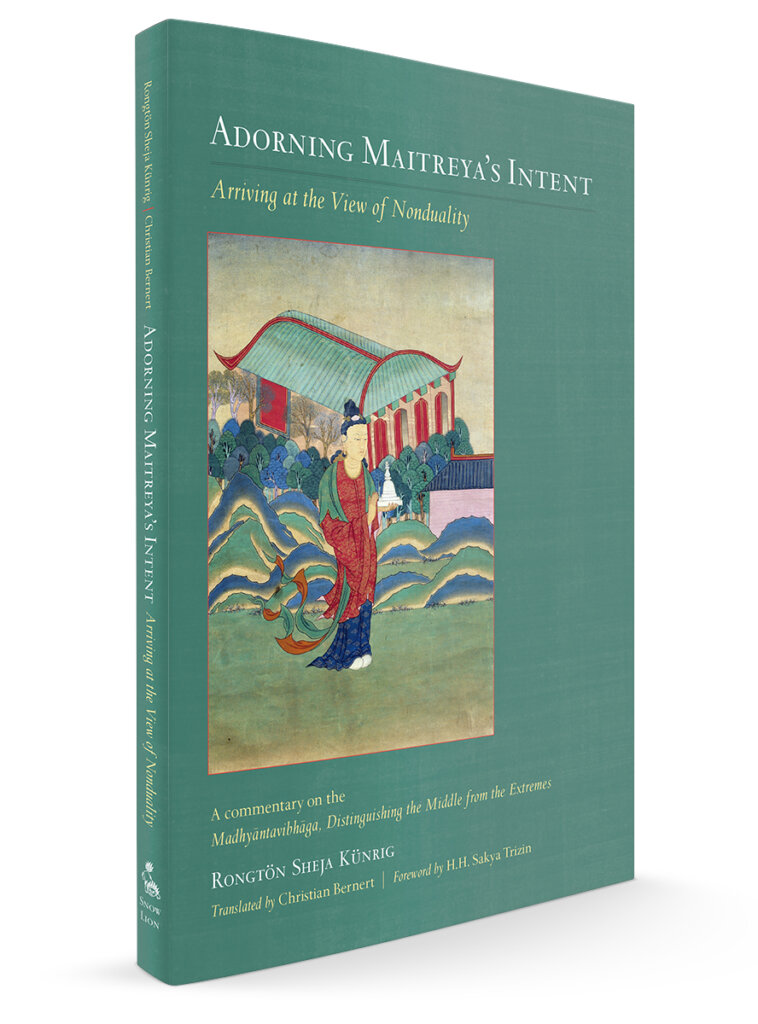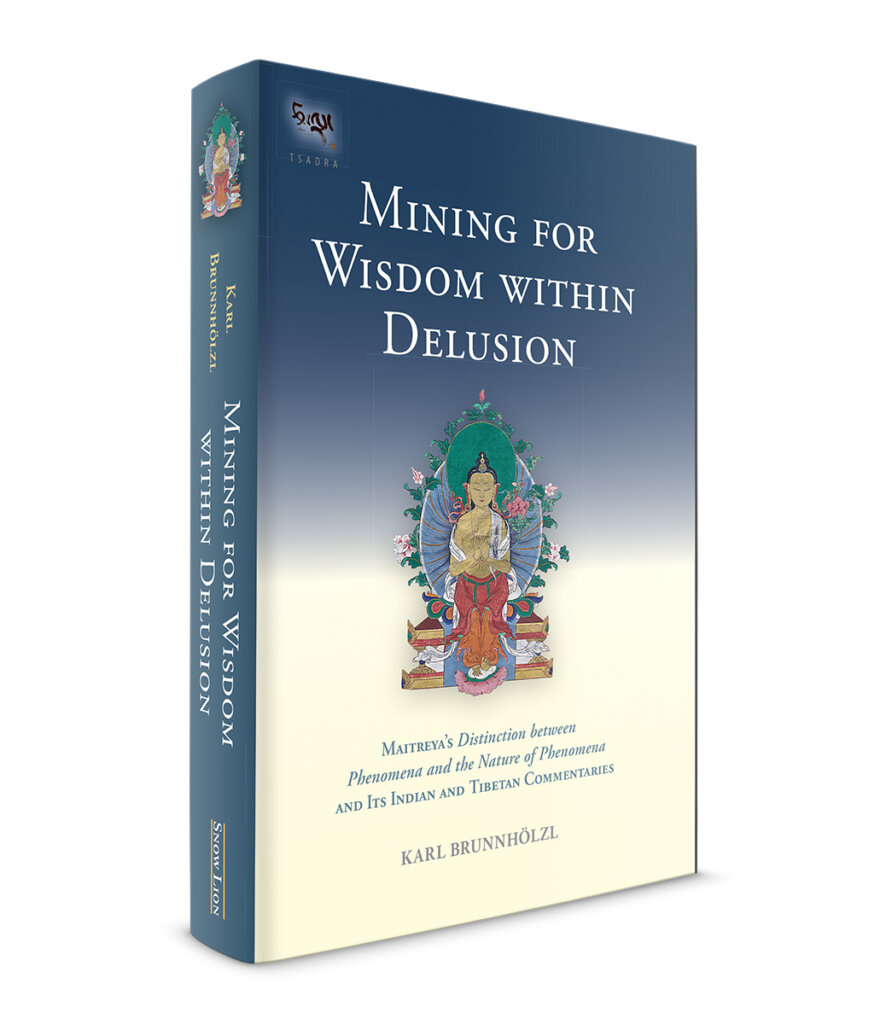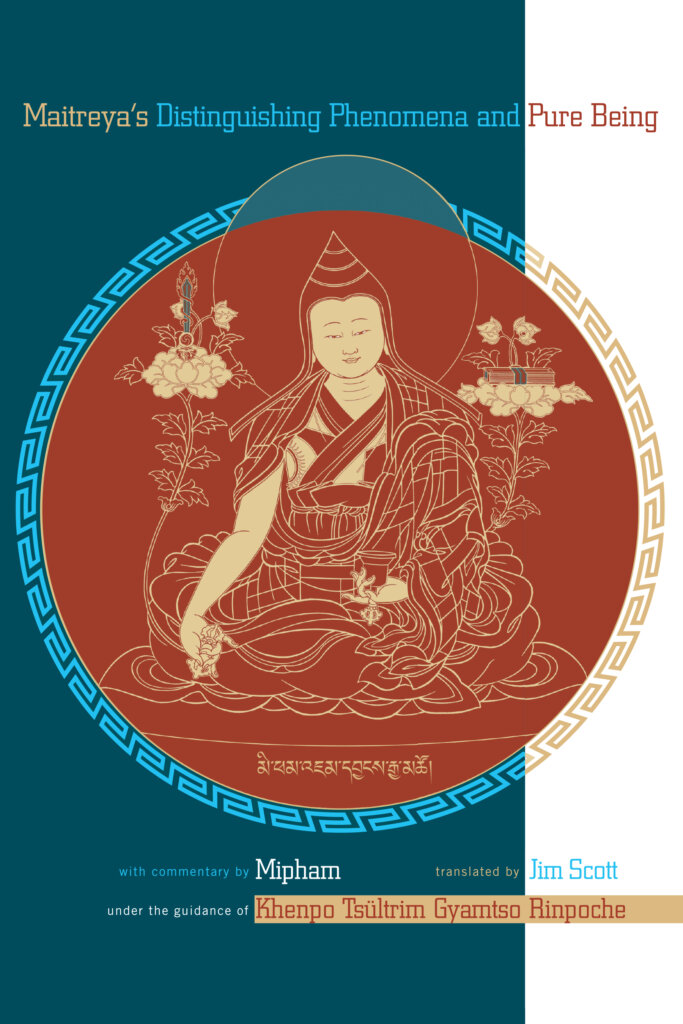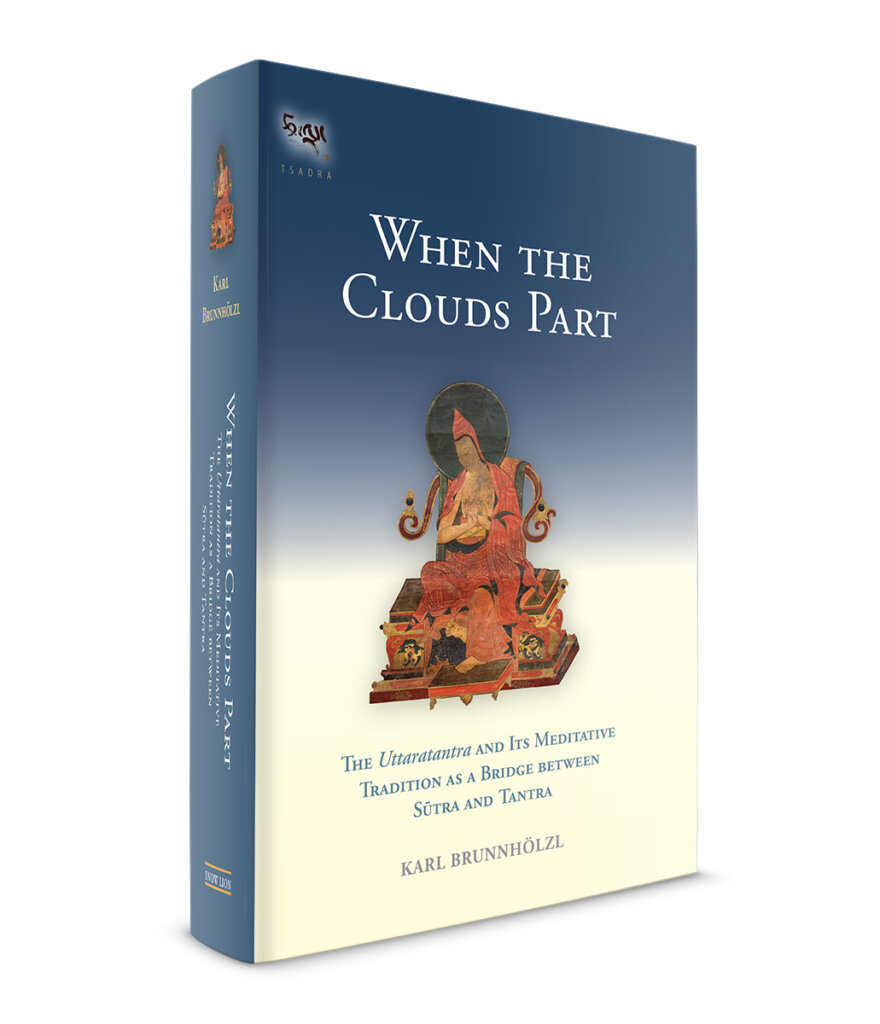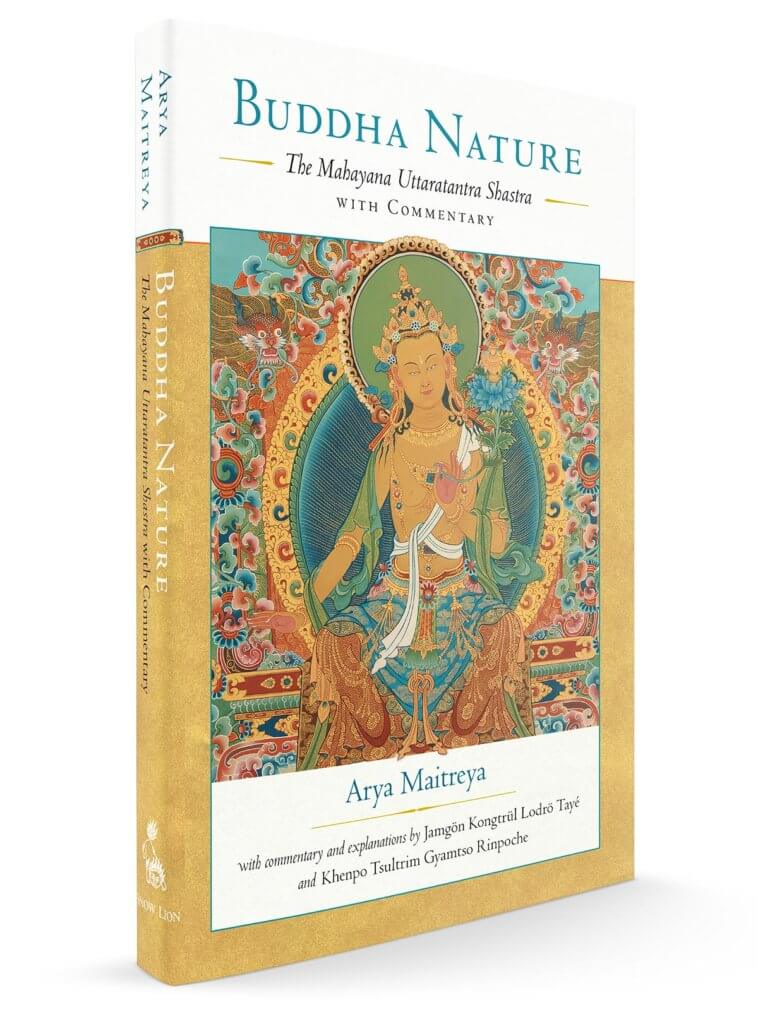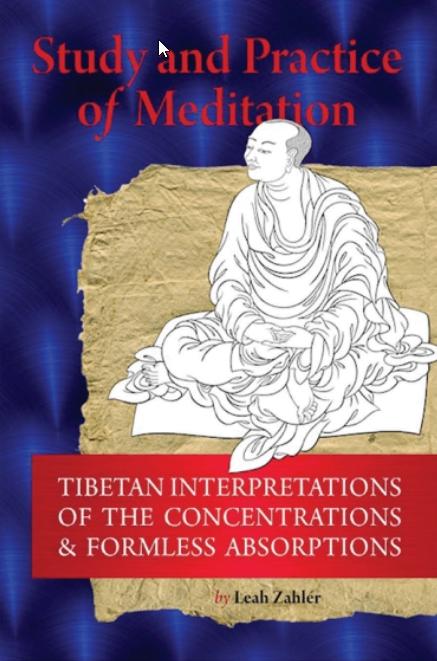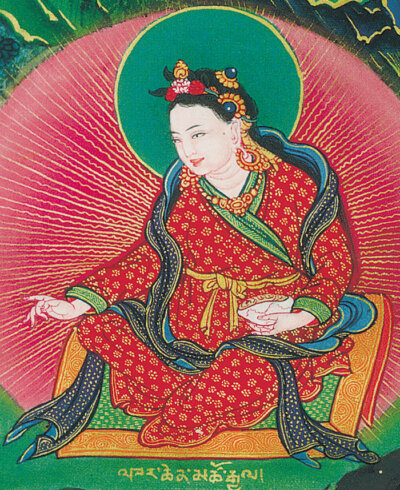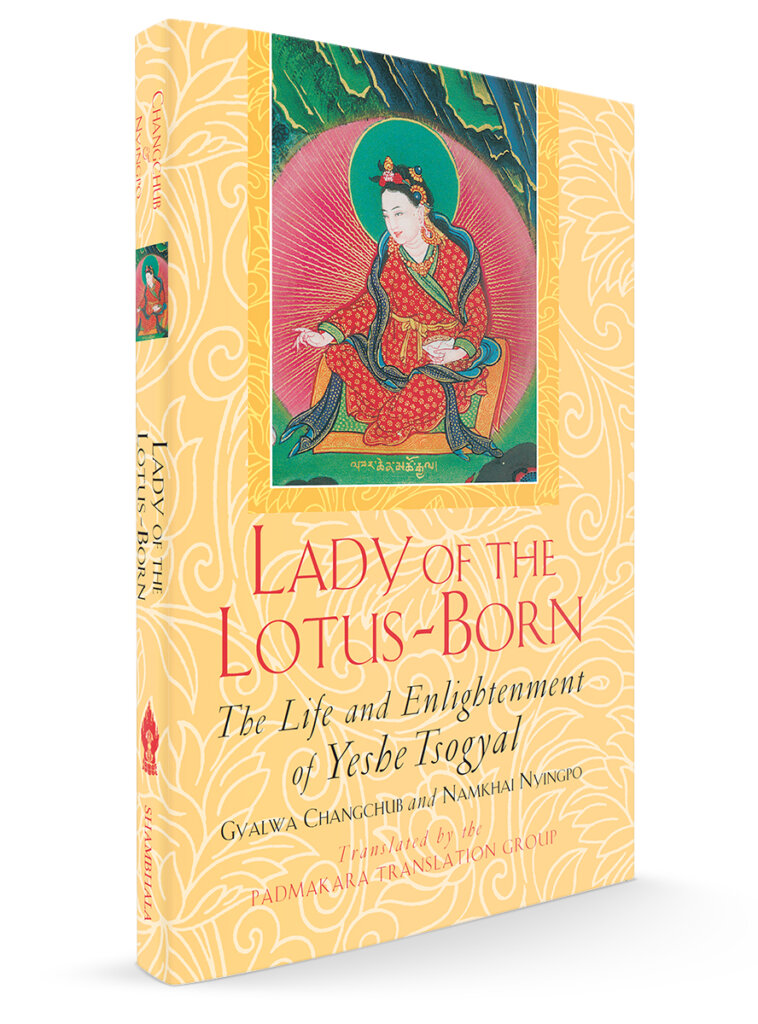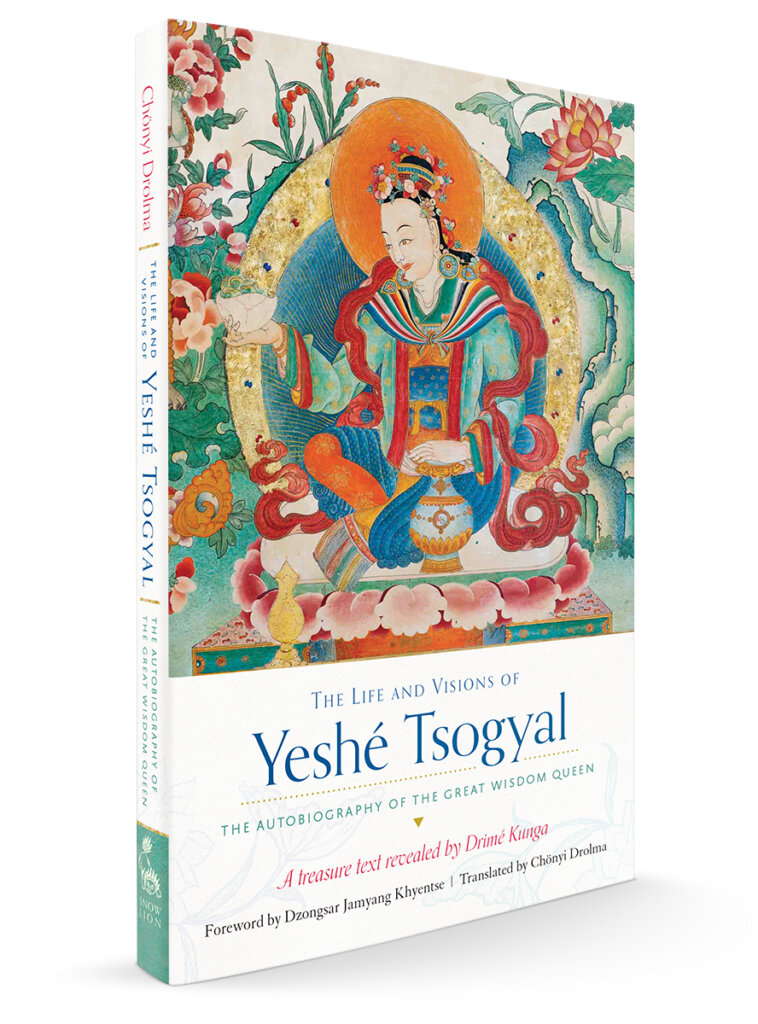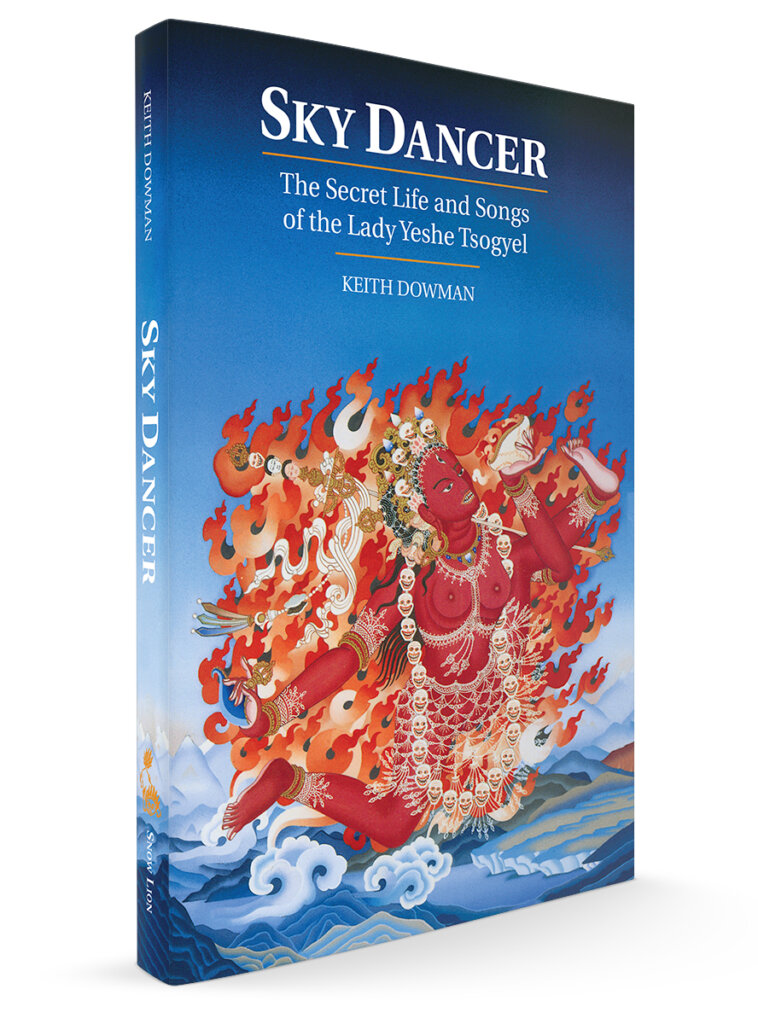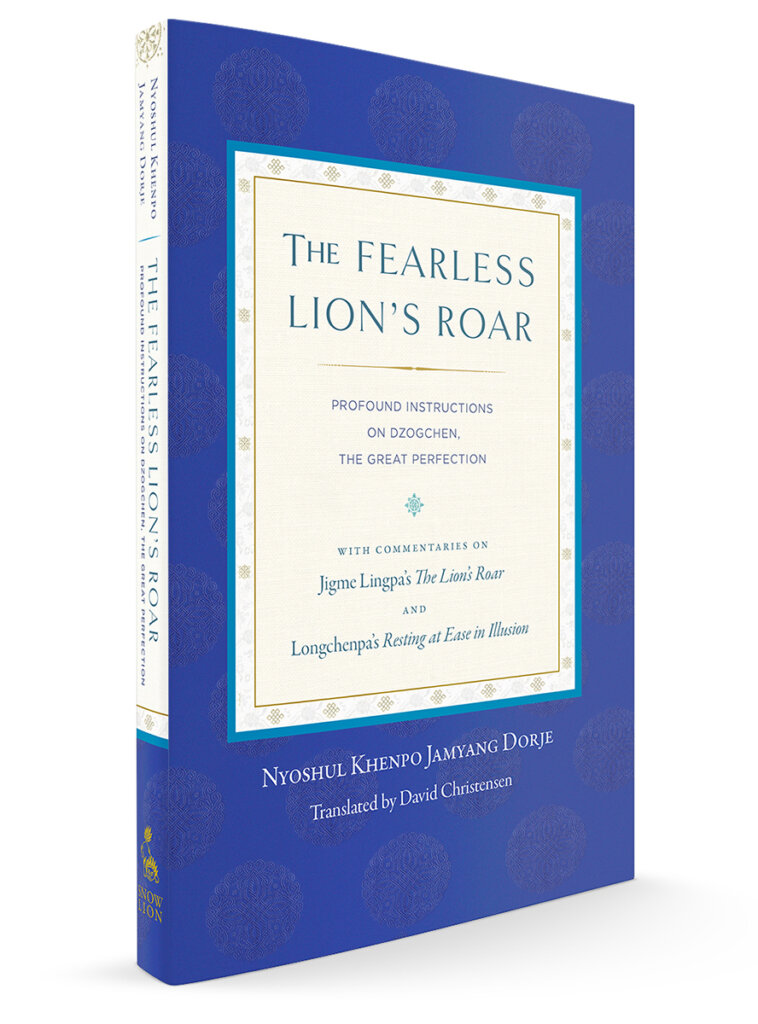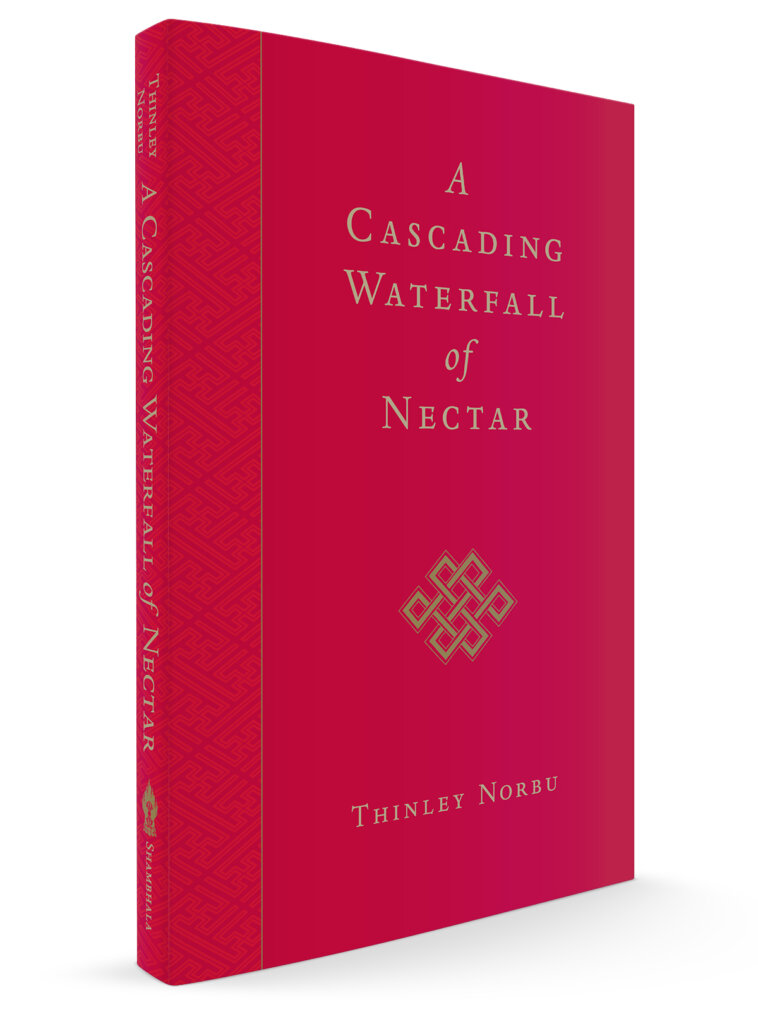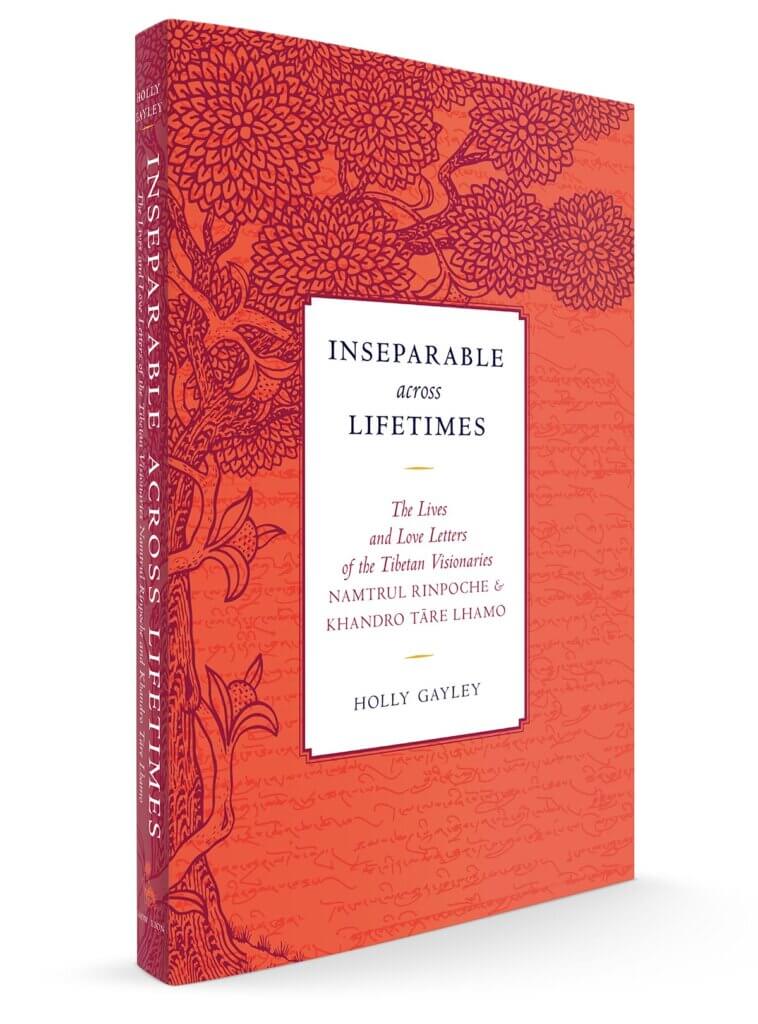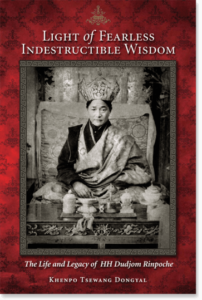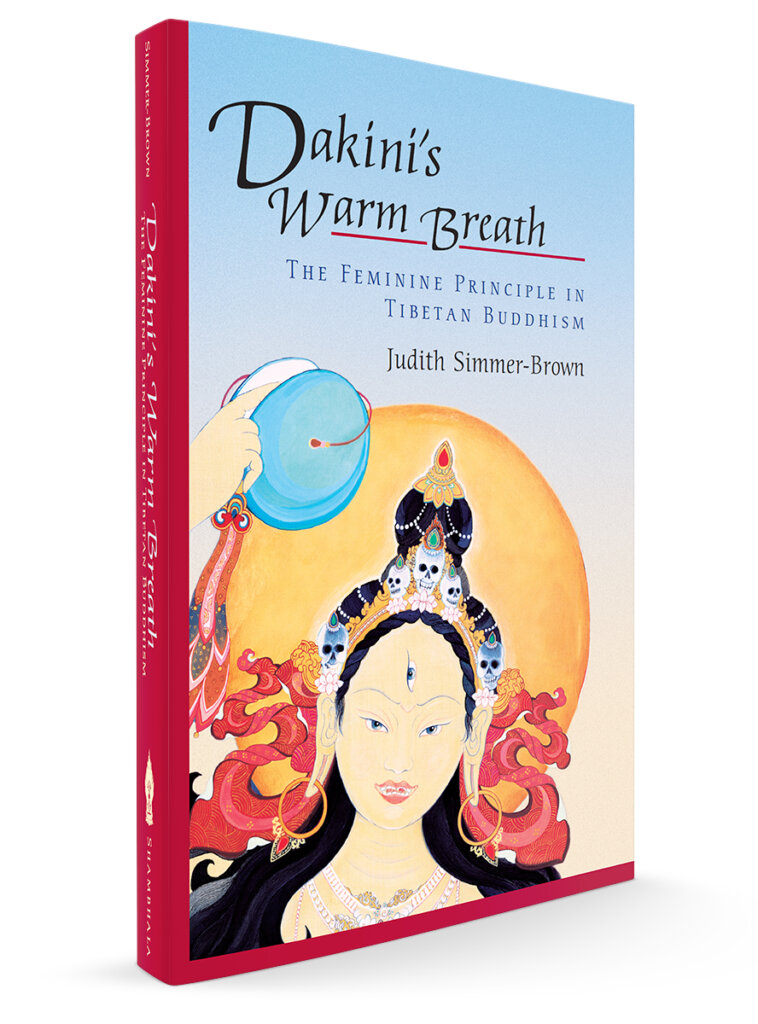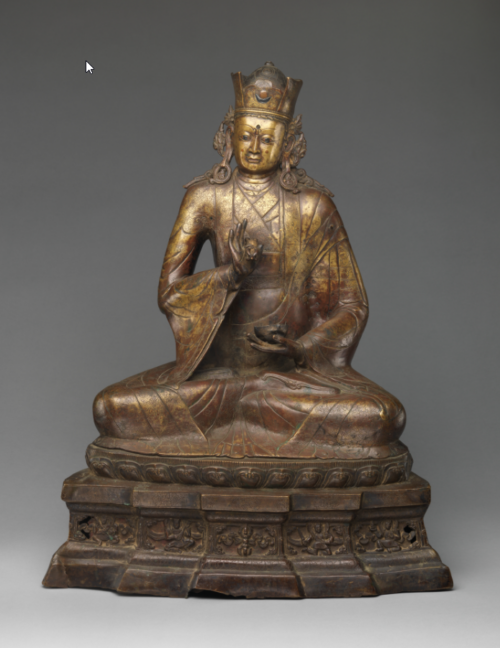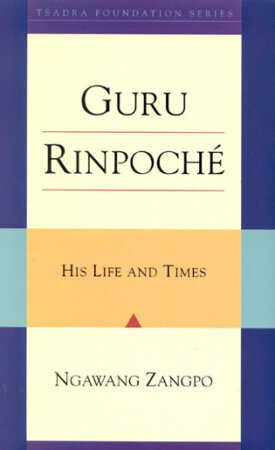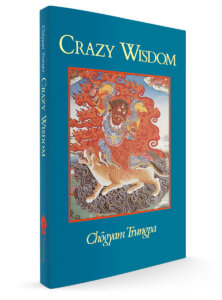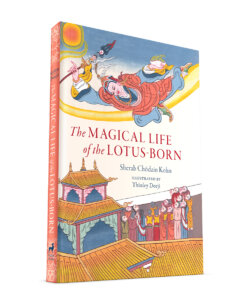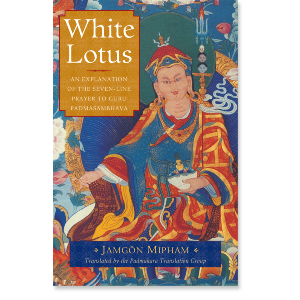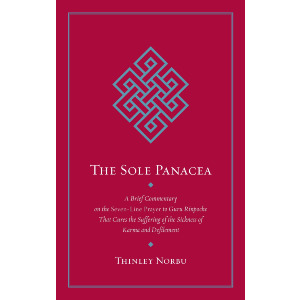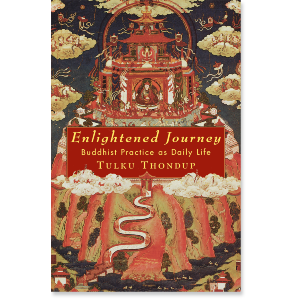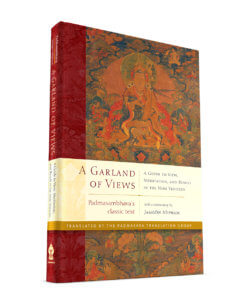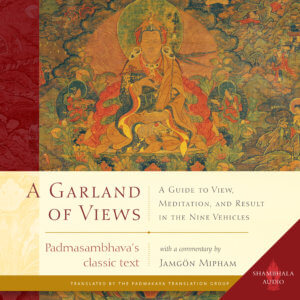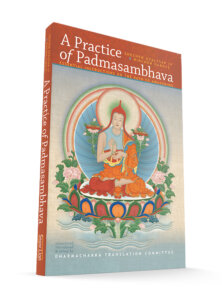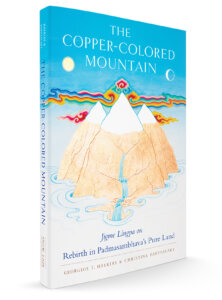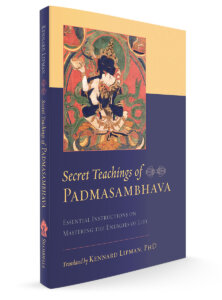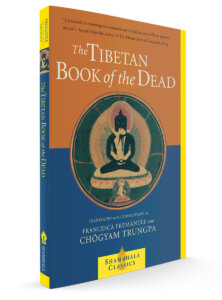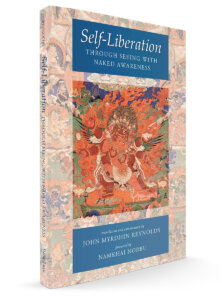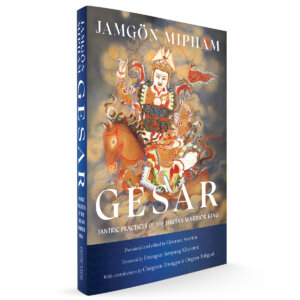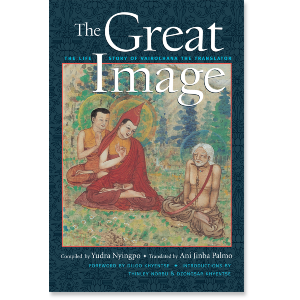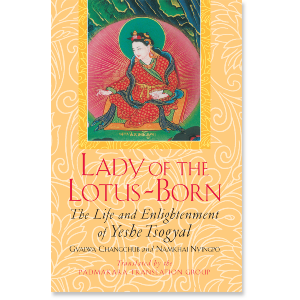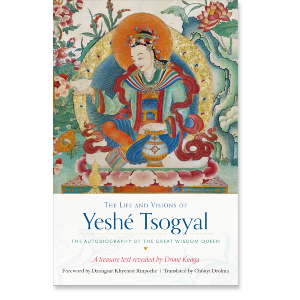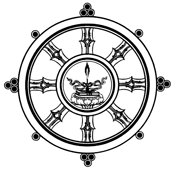

Padmakara Translation Group
-
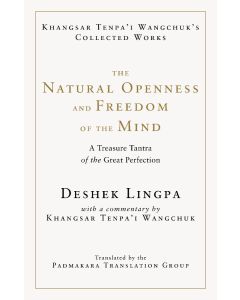 The Natural Openness and Freedom of the Mind$29.95- Hardcover
The Natural Openness and Freedom of the Mind$29.95- HardcoverBy Khangsar Tenpa'i Wangchuk
Translated by Padmakara Translation Group
By Deshek Lingpa -
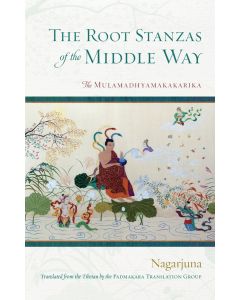 The Root Stanzas of the Middle Way$24.95- Paperback
The Root Stanzas of the Middle Way$24.95- PaperbackBy Nagarjuna
Translated by Padmakara Translation Group -
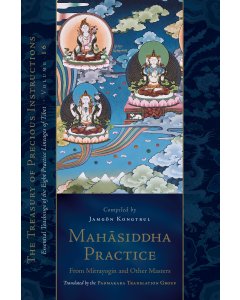 Mahasiddha Practice$39.95- Hardcover
Mahasiddha Practice$39.95- HardcoverBy Jamgon Kongtrul Lodro Taye
Translated by Padmakara Translation Group -
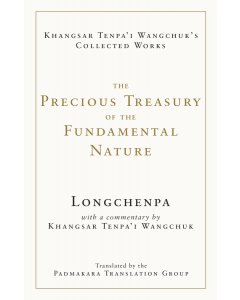 The Precious Treasury of the Fundamental Nature$34.95- Hardcover
The Precious Treasury of the Fundamental Nature$34.95- HardcoverBy Longchenpa
By Khangsar Tenpa'i Wangchuk
Translated by Padmakara Translation Group -
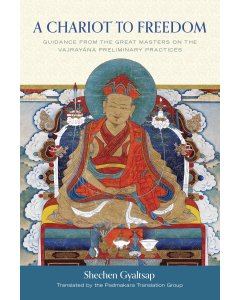 A Chariot to Freedom$39.95- Hardcover
A Chariot to Freedom$39.95- Hardcover -
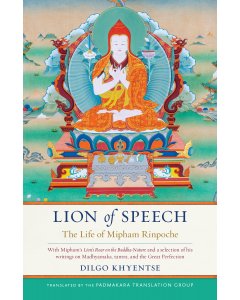 Lion of Speech$27.95- Hardcover
Lion of Speech$27.95- HardcoverTranslated by Padmakara Translation Group
By Dilgo Khyentse
By Jamgon Mipham -
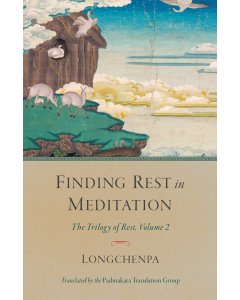 Finding Rest in Meditation$22.95- Paperback
Finding Rest in Meditation$22.95- PaperbackBy Longchenpa
Translated by Padmakara Translation Group -
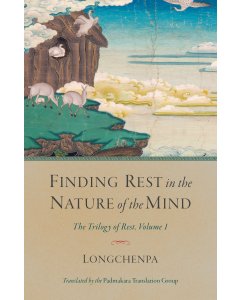 Finding Rest in the Nature of the Mind$29.95- Paperback
Finding Rest in the Nature of the Mind$29.95- PaperbackBy Longchenpa
Translated by Padmakara Translation Group -
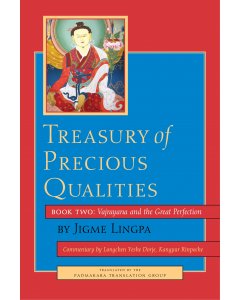 Treasury of Precious Qualities: Book Two$34.95- Paperback
Treasury of Precious Qualities: Book Two$34.95- PaperbackBy Longchen Yeshe Dorje, Kangyur Rinpoche
By Jigme Lingpa
Translated by Padmakara Translation Group -
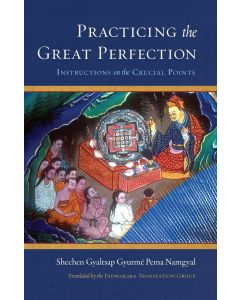 Practicing the Great Perfection$29.95- Hardcover
Practicing the Great Perfection$29.95- Hardcover -
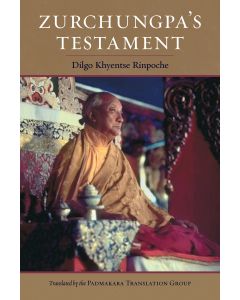 Zurchungpa's Testament$29.95- Paperback
Zurchungpa's Testament$29.95- PaperbackBy Dilgo Khyentse
Translated by Padmakara Translation Group
By Zurchung Sherab Trakpa
By Shechen Gyaltsap IV
By Shechen Gyaltsap Gyurme Pema Namgyal -
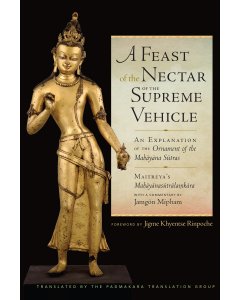 A Feast of the Nectar of the Supreme Vehicle$69.95- Hardcover
A Feast of the Nectar of the Supreme Vehicle$69.95- HardcoverTranslated by Padmakara Translation Group
-
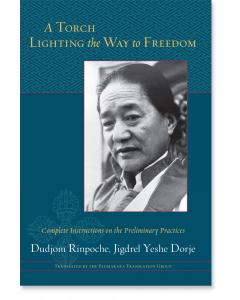 A Torch Lighting the Way to Freedom$34.95- Paperback
A Torch Lighting the Way to Freedom$34.95- PaperbackTranslated by Padmakara Translation Group
By Dudjom Rinpoche -
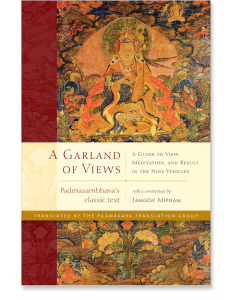 A Garland of Views$22.95- Hardcover
A Garland of Views$22.95- HardcoverBy Padmasambhava
By Jamgon Mipham
Translated by Padmakara Translation Group -
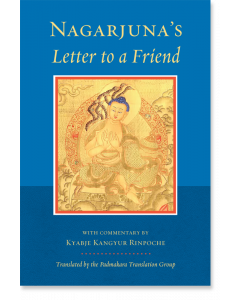 Nagarjuna's Letter to a Friend$24.95- Paperback
Nagarjuna's Letter to a Friend$24.95- PaperbackBy Nagarjuna
By Longchen Yeshe Dorje, Kangyur Rinpoche
Translated by Padmakara Translation Group -
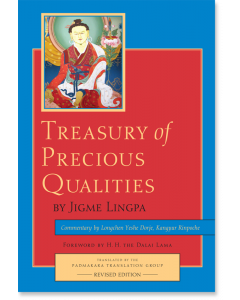 Treasury of Precious Qualities: Book One$39.95- Paperback
Treasury of Precious Qualities: Book One$39.95- PaperbackBy Longchen Yeshe Dorje, Kangyur Rinpoche
Translated by Padmakara Translation Group
Foreword by H.H. the Fourteenth Dalai Lama
By Jigme Lingpa -
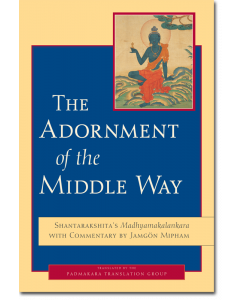 The Adornment of the Middle Way$39.95- Paperback
The Adornment of the Middle Way$39.95- PaperbackTranslated by Padmakara Translation Group
By Jamgon Mipham
By Shantarakshita -
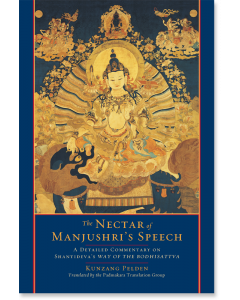 The Nectar of Manjushri's Speech$39.95- Paperback
The Nectar of Manjushri's Speech$39.95- PaperbackBy Kunzang Pelden
Translated by Padmakara Translation Group -
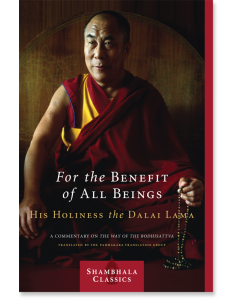 For the Benefit of All Beings$21.95- Paperback
For the Benefit of All Beings$21.95- PaperbackRead by James Gimian
Read by Wulstan Fletcher
Translated by Padmakara Translation Group
By H.H. the Fourteenth Dalai Lama -
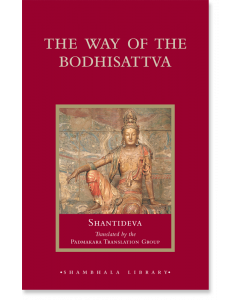 The Way of the Bodhisattva$24.95- Hardcover
The Way of the Bodhisattva$24.95- HardcoverBy Shantideva
Translated by Padmakara Translation Group
Read by Wulstan Fletcher -
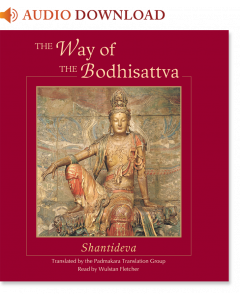 The Way of the BodhisattvaDigital Audio
The Way of the BodhisattvaDigital AudioBy Shantideva
Translated by Padmakara Translation Group
Read by Wulstan Fletcher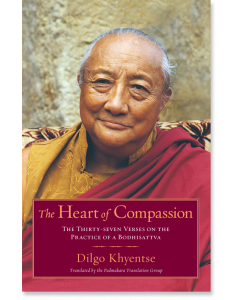 The Heart of Compassion$22.95- Paperback
The Heart of Compassion$22.95- PaperbackBy Dilgo Khyentse
Translated by Padmakara Translation Group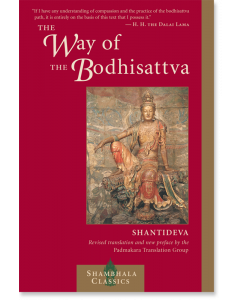 The Way of the Bodhisattva$16.95- Paperback
The Way of the Bodhisattva$16.95- PaperbackBy Shantideva
Translated by Padmakara Translation Group
Foreword by H.H. the Fourteenth Dalai Lama
Read by Wulstan Fletcher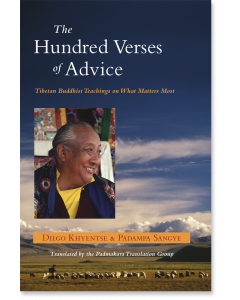 The Hundred Verses of Advice$18.95- Paperback
The Hundred Verses of Advice$18.95- PaperbackTranslated by Padmakara Translation Group
By Dilgo Khyentse
By Padampa Sangye
- Bestsellers Tibetan 4item
- Treasury of Precious Instructions 1 item
- Buddhist Academic 7item
- Buddhist Biography/Memoir 2item
- Buddhist Ethics 2item
- Buddhist History 1 item
- Buddhist Overviews 7item
- Buddhist Philosophy 13item
- Dependent Origination 1 item
- Foundation Texts 4item
- Four Noble Truths 2item
- Introductions to Buddhism 4item
- Way of the Bodhisattva 6item
- 37 Practices 1 item
- Abhidharma 1 item
- Bardo Teachings 1 item
- Bodhisattva Path 10item
- Buddha Nature 6item
- Prajnaparamita 1 item
- Dalai Lamas 2item
- Deity Practice 3item
- Dzogchen 9item
- Five Maitreya Texts 1 item
- Gelug Tradition 2item
- Guru Yoga 1 item
- Gesar 1 item
- Lam Rim 2item
- Lojong/Mind Training 1 item
- Madhyamaka 6item
- Mahamudra 4item
- Ngondro 5item
- Dudjom Tersar 3item
- Longchen Nyingtik 3item
- Nyingma Tradition 25item
- Phowa 2item
- Seven Line Prayer 1 item
- Shamatha 4item
- Stages of Meditation 4item
- Sutra 1 item
- Tantra 4item
- TenRim 2item
- Terma / Treasure Texts 4item
- Texts with Prerequisites 2item
- Biography 2item
- Vegetarian 1 item
GUIDES
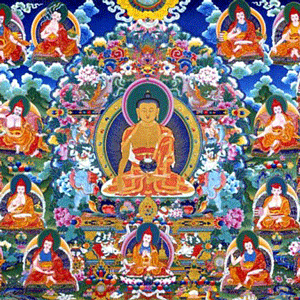
Indian Mahayana Masters of the 2nd-8th Centuries

The Indian Masters
Indian Mahayana Masters from the 2nd-8th Centuries
The Tibetan traditions all look back to India as the source of wisdom. There were countless masters all over India, north and south, east (including present-day Bangladesh) and west (including present-day Pakistan). The Mahayana reached its full expression during this period, and what follows is a partial but growing list of Reader Guides to these masters.
The Seventeen Pandits of Nalanda
2nd through 11th centuries
Tibetan Buddhism is none other than the Buddhism of India in the tradition of Nalanda, the great center of Buddhist learning that was located in present-day Bihar, India. There are seventeen great scholars profiled here, including Nagarjuna, Aryadeva, Asanga, Vasabandhu, Buddhapalita, Dignaga, Bhavaviveka, Vimuktisena, Chandrakirti, Dharmakirti, Shantideva, Shantarakshita, Kamalashila, Haribhadra, Gunaprabha, Shakyaprabha. and Atisha.
Nagarjuna
(2nd century....and beyond)
The great master closely associated with the Perfection of Wisdom
Shantideva and the Way of the Bodhisattva
8th century
The great master Shantideva is the author of two very important texts. The first is the Śikṣāsamuccaya, or Training Anthology which is a compilation of many works. The second is the Bodhicharyavatara, or Way of the Bodhisattva. This Reader Guide focuses on the latter work.
Asanga
4th century
The great Mahayana figure who is a key explicator of Yogacara, and also received the Five Maitreya texts from Maitreya.
Xuanzang (602-664 CE)
7th century
While not an Indian master, we wanted to include Xuanzang, certainly one of the most important figures in Buddhist history. His 16 year pilgrimage from his home in China throughout the Buddhist world is almost The Odyssey of the Buddhist literature. His translation and preservation of texts, as well as the account of his journey, had come down to us through the ages and is well worth a deep exploration.
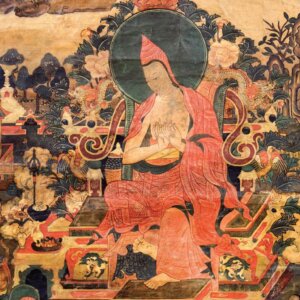
Asanga and Yogacara: A Guide for Readers

Asanga
Asanga and Yogacara: A Guide for Readers
Asanga, from The Buddhist Art Coloring Book
Asanga, along with his brother Vasabandu, is an inestimably important figure in Mahayana Buddhism, associated with some of the most important works on ethical and moral dimensions of progress on the path, as well as the Yogacara philosophical school. He is particularly revered in Tibet and East Asia.
Asanga is best known for his two "Summary Treatises" and the teachings he received from Maitreya, the Five Maitreya texts.
The following is from Indestructible Truth: The Living Spirituality of Tibetan Buddhism:
Asanga, considered the founder of the Yogachara school, was born into a Buddhist family in the region of Gandhara in northwestern India.3 As a child, he was drawn strongly to meditation but was also schooled in the major divisions of learning then current in India, including writing, debate, mathematics, medicine, and the fine arts. Asanga was a brilliant student and excelled at whatever he tried. At an early age, he took Buddhist ordination within a Hinayana sect, the Mahishasaka, known for the great importance it attached to the practice of meditation.
Asanga trained under several teachers, mastering the Hinayana scriptures and studying Mahayana sutras. When he encountered the Prajnaparamita sutras, however, he found that while he could read their words, he did not really understand their inner meaning or the awakening they described. Asanga felt compelled by these teachings and recognized that the only way he could gain the transcendent wisdom that he longed for would be to enter into a meditation retreat. Having received instruction from his guru, he now went into strict retreat on Mount Kukkutapada. He spent his time meditating and supplicating his personal deity, the future buddha, Maitreya, for guidance, inspiration, and teaching.
Essential Texts by Asanga
Three Volume Slipcase | Ebook
$150.00 - Hardcover
A Compendium of the Mahayana: Asanga’s Mahayanasamgraha and Its Indian and Tibetan Commentaries
By Karl Brunnholzl
Asanga's The Compendium of the Mahayana, or Mahāyānasaṃgraha, is one of the greatest works expounding the Yogacara teachings of Mahayana. It is also an incrediblefeat of translation, done by master translator and scholar Karl Brunnholzl.
The Mahāyānasaṃgraha, published here with its Indian and Tibetan commentaries in three volumes, presents virtually everything anybody might want to know about the Yogācāra School of Mahāyāna Buddhism. It discusses in detail the nature and operation of the eight kinds of consciousness, the often-misunderstood notion of “mind only” (cittamātra), dependent origination, the cultivation of the path and its fruition in terms of the four wisdoms, and the three bodies (kāyas) of a buddha.
Volume 1 presents the translation of the Mahāyānasaṃgraha along with a commentary by Vasubandhu. The introduction gives an overview of the text and its Indian and Tibetan commentaries, and explains in detail two crucial elements of the Yogācāra view: the ālaya-consciousness and the afflicted mind (klistamanas).
Volume 2 presents translations of the commentary by Asvabhāva and an anonymous Indian commentary on the first chapter of the text. These translations are supplemented in the endnotes by excerpts from Tibetan commentaries and related passages in other Indian and Chinese Yogācāra works.
Volume 3 includes appendices with excerpts from other Indian and Chinese Yogācāra texts and supplementary materials on major Yogācāra topics in the Mahāyānasaṃgraha.
Hardcover | Ebook
$59.95 - Hardcover
The Bodhisattva Path to Unsurpassed Enlightenment: A Complete Translation of the Bodhisattvabhumi
By Asanga, translated by Artemus Engle
Ārya Asanga’s Bodhisattvabhūmi, or The Stage of a Bodhisattva, is the Mahāyāna tradition’s most comprehensive manual on the practice and training of bodhisattvas—by the author’s own account, a compilation of the full range of instructions contained in the entire collection of Mahāyāna sutras. A classic work of the Yogācāra school, it has been cherished in Tibet by all the historical Buddhist lineages as a primary source of instruction on bodhisattva ethics, vows, and practices, as well as for its summary of the ultimate goal of the bodhisattva path—supreme enlightenment.
Despite the text’s seminal importance in the Tibetan traditions, it long remained unavailable in English except in fragments. Engle’s translation, made from the Sanskrit original with reference to the Tibetan translation and commentaries, will enable English readers to understand more fully and clearly what it means to be a bodhisattva and practitioner of the Mahāyāna tradition.
A Deep Dive on the Bodhisattvabhumi
Once you have a copy of The Bodhisattva Path to Unsurpassed Enlightenment, a great complement to reading the book is to watch translator and scholar Artemus Engle discuss the work in detail, offering great context. Watch the preview here for a taste, and then jump right into the two talks, free to all.
Overview and Trailer
Part I, 1.5 Hours
Part II, 2 Hours
The Five Maitreya Texts
See also our two interviews on these texts with Karl Brunnholzl and Thomas Doctor of the Dharmachakra Translation Committee.
In Peaceful Heart, Dzigar Kongtrul Rinpoche recounts the story of how Asanga met Maitreya and received the teachings that come down to us as The Five Maitreya texts:
Asanga isolated himself in strict retreat, devoting all his time to practices related to Maitreya. His hope was for Maitreya to appear before him and give him instructions that would lead him to enlightenment. But after six years of diligent practice with no results, Asanga got frustrated and left. On his way home, he met a man who was rubbing a large iron bar with a soft piece of cloth. When Asanga asked what he was doing, the man said he was making a needle. Amazed at the effort people go through to accomplish futile aims, Asanga realized he needed to be more persistent on his path to enlightenment. So he returned to his retreat, determined never to give up. But three years later, when Maitreya still hadn’t appeared, not even in a dream, Asanga again left. This time he met a man who was stroking a massive boulder with a feather dipped in water. The man told him that he wanted to wear away the boulder because it was blocking the sunlight from his house. This gave Asanga renewed determination to keep persevering with his practice. But still Maitreya didn’t come.
Another uneventful and discouraging three years passed. Finally, Asanga left again and began to wander around, feeling hopeless and lost. He saw a crippled dog dragging herself along the road. Her rotting body was infested with maggots that were eating her flesh. Full of pain and aggression, the dog barked viciously at Asanga when he came closer. The sight broke Asanga’s heart. He thought about how to remove the maggots. If he used his hands, the maggots would probably be crushed, so the only way was to use his tongue. Disgusted by the rotting flesh, Asanga closed his eyes and stretched out to lick the maggots out of the dog. But as far as he stretched, he still didn’t feel the maggots. Finally, he felt his tongue touch the ground. He opened his eyes. Instead of the dog, Maitreya stood before him.
"How little compassion you have!" Asanga burst out. "I practiced for twelve years, and you didn’t even appear in my dreams!” Maitreya said, “Since the very first day of your retreat, I’ve been right there with you, but you didn’t have the openness to see me. Your twelve years of practice made your obscurations thinner. Today, your pure compassion for this dog finally made you open enough to see me in person. If you don’t believe me, put me on your shoulder and walk around.” Asanga put Maitreya on his shoulder and walked around at a fair, asking people what they saw on his shoulder. No one saw anything. They just thought he was crazy. Finally, an old woman, who also had developed enough openness to have higher perceptions, asked, “Why are you carrying a rotten dog on your shoulder?"
From then on, Maitreya imparted the teachings which we now know as The Five Maitreya Texts.
The Ornament of Clear Realization: The Abhisamayālaṃkāra
The Abhisamayalamkara summarizes all the topics in the vast body of the Prajnaparamita Sutras. Resembling a zip-file, it comes to life only through its Indian and Tibetan commentaries. Together, these texts not only discuss the "hidden meaning" of the Prajnaparamita Sutras—the paths and bhumis of sravakas, pratyekabuddhas, and bodhisattvas—but also serve as contemplative manuals for the explicit topic of these sutras—emptiness—and how it is to be understood on the progressive levels of realization of bodhisattvas. Thus these texts describe what happens in the mind of a bodhisattva who meditates on emptiness, making it a living experience from the beginner's stage up through buddhahood.
The Ornament of Clear Realization
Karl Brunnholzl discussing the two Gone Beyond volumes on the Kagyu tradition and the Ornament of Clear Realization and Groundless Paths which is the Nyingma take on the same work
Hardcover | Ebook
$54.95 - Hardcover
Gone Beyond (Volume 1)
The Prajnaparamita Sutras, The Ornament of Clear Realization, and Its Commentaries in the Tibetan Kagyu Tradition
By Asanga, Maitreya, the Fifth Shamar Rinpoche, and Karl Brunnholzl
Gone Beyond contains the first in-depth study of the Abhisamayalamkara (the text studied most extensively in higher Tibetan Buddhist education) and its commentaries in the Kagyu School. This study (in two volumes) includes translations of Maitreya's famous text and its commentary by the Fifth Shamarpa Goncho Yenla (the first translation ever of a complete commentary on the Abhisamayalamkara into English), which are supplemented by extensive excerpts from the commentaries by the Third, Seventh, and Eighth Karmapas and others. Thus it closes a long-standing gap in the modern scholarship on the Prajnaparamita Sutras and the literature on paths and bhumis in mahayana Buddhism.
The first volume presents an English translation of the first three chapters of the Abhisamayalamkara and its commentary by the Fifth Shamarpa.
Hardcover | Ebook
$44.95 - Hardcover
Gone Beyond (Volume 2)
The Prajnaparamita Sutras, The Ornament of Clear Realization, and Its Commentaries in the Tibetan Kagyu Tradition
By Asanga, Maitreya, the Fifth Shamar Rinpoche, and Karl Brunnholzl
The second volume presents an English translation of the final five chapters and their commentary by the Fifth Shamarpa.
Hardcover | Ebook
$54.95 - Hardcover
Groundless Paths: The Prajnaparamita Sutras, The Ornament of Clear Realization, and Its Commentaries in the Tibetan Nyingma Tradition
By Asanga, Maitreya, Patrul Rinpoche, Mipham Rinpoche, and Karl Brunnholzl
This study consists mainly of translations of Maitreya's famous text and two commentaries on it by Patrul Rinpoche. These are supplemented by three short texts on the paths and bhumis by the same author, as well as extensive excerpts from commentaries by six other Nyingma masters, including Mipham Rinpoche. Thus this book helps close a long-standing gap in the modern scholarship on the prajñaparamita sutras and the literature on paths and bhumis in mahayana Buddhism.
The Ornament of Mahayana Sutras: The Māhayānasūtrālaṃkāra
Padmakara's Stephen Gethin on the Mahāyānasūtrālaṃkāra
A discussion of the Feast of the Nectar of the Supreme Vehicle and the importance of Mipham Rinpoche's commentary.
Hardcover | Ebook
$54.95 - Hardcover
A Feast of the Nectar of the Supreme Vehicle: An Explanation of the Ornament of the Mahayana Sutras
By Asanga, Mipham Rinpoche. Translated and introduced by the Padmakara Translations Group
A monumental work and Indian Buddhist classic, the Ornament of the Mahāyāna Sūtras (Mahāyānasūtrālamkāra) is a precious resource for students wishing to study in-depth the philosophy and path of Mahāyāna Buddhism. This full translation and commentary outlines the importance of Mahāyāna, the centrality of bodhicitta or the mind of awakening, the path of becoming a bodhisattva, and how one can save beings from suffering through skillful means.
This definitive composition of Mahāyāna teachings was imparted in the fourth century by Maitreya to the famous adept Asanga, one of the most prolific writers of Buddhist treatises in history. Asanga’s work, which is among the famous Five Treatises of Maitreya, has been studied, commented upon, and taught by Buddhists throughout Asia ever since it was composed.
In the early twentieth century, one of Tibet’s greatest scholars and saints, Jamgön Mipham, wrote A Feast of the Nectar of the Supreme Vehicle, which is a detailed explanation of every verse. This commentary has since been used as the primary blueprint for Tibetan Buddhists to illuminate the depth and brilliance of Maitreya’s pith teachings. The Padmakara Translation Group has provided yet another accessible and eloquent translation, ensuring that English-speaking students of Mahāyāna will be able to study this foundational Buddhist text for generations to come.
Distinguishing the Middle from Extremes: The Madhyāntavibhāga
This text explains the vast paths of all three yanas, emphasizing the view of Yogācāra (including the Yogācāra Middle Way) and the distinctive features of the mahāyāna.
Paperback | Ebook
$22.95 - Paperback
Middle Beyond Extremes: Maitreya's Madhyantavibhaga with Commentaries by Khenpo Shenga and Ju Mipham
By Asanga, Khenpo Shenga, Mipham Rinpoche. Translated and introduced by the Padmakara Translations Group
This text employs the principle of the three natures to explain the way things seem to be as well as the way they actually are. It is presented here alongside commentaries by two outstanding masters of Tibet’s nonsectarian Rimé movement, Khenpo Shenga and Ju Mipham.
Distinguishing Phenomena from Their Intrinsic Nature : The Dharmadharmatāvibhāga
This text discusses the difference between samsaric confusion and the liberating power of nonconceptual wisdom-the heart essence of all profound sutras.
Paperback | Ebook
$18.95 - Paperback
Distinguishing Phenomena from Their Intrinsic Nature: Maitreya's Dharmadharmatavibhanga with Commentaries by Khenpo Shenga and Ju Mipham
By Asanga, Maitreya, Khenpo Shenga, Mipham Rinpoche. Translated and introduced by the Dharmachakra Translation Committee
Outlining the difference between appearance and reality, this work shows that the path to awakening involves leaving behind the inaccurate and limiting beliefs we have about ourselves and the world around us and opening ourselves to the limitless potential of our true nature.
By divesting the mind of confusion, the treatise explains, we see things as they actually are. This insight allows for the natural unfolding of compassion and wisdom. This volume includes commentaries by Khenpo Shenga and Ju Mipham, whose discussions illuminate the subtleties of the root text and provide valuable insight into the nature of reality and the process of awakening.
Paperback | Ebook
$24.95 - Paperback
Adorning Maitreya’s Intent: Arriving at the View of Nonduality
By Asanga, Maitreya, Rongtonpa, introduced and translated by Christian Bernert
Here, the Tibetan master Rongtön unpacks this manual and its practices for us in a way that is at once accessible and profound, with actual practical meditative applications. The work explains the vast paths of the three vehicles of Buddhism, emphasizing the view of Yogācāra, and demonstrates the inseparability of experience and emptiness. It offers a detailed presentation of the three natures of reality, an accurate understanding of which provides the antidotes to confusion and suffering. The translator’s introduction presents a clear overview of all the concepts explored in the text, making it easy for the reader to bridge its ideas to actual practice.
Hardcover | Ebook
$39.95 - Hardcover
Mining for Wisdom within Delusion: Maitreya's Distinction between Phenomena and the Nature of Phenomena and Its Indian and Tibetan Commentaries
By Asanga, Maitreya, Vasabandhu, Gö Lotsāwa, The Third Karmapa Rangjung Dorje, . Translated and introduced by Karl Brunnholzl.
Maitreya’s Distinction between Phenomena and the Nature of Phenomena distinguishes the illusory phenomenal world of saṃsāra produced by the confused dualistic mind from the ultimate reality that is mind’s true nature. The transition from the one to the other is the process of “mining for wisdom within delusion.” Maitreya’s text calls this “the fundamental change,” which refers to the vanishing of delusive appearances through practicing the path, thus revealing the underlying changeless nature of these appearances. In this context, the main part of the text consists of the most detailed explanation of nonconceptual wisdom—the primary driving force of the path as well as its ultimate result—in Buddhist literature.
The introduction of the book discusses these two topics (fundamental change and nonconceptual wisdom) at length and shows how they are treated in a number of other Buddhist scriptures. The three translated commentaries, by Vasubandhu, the Third Karmapa, Rangjung Dorje, and Gö Lotsāwa, as well as excerpts from all other available commentaries on Maitreya’s text, put it in the larger context of the Indian Yogācāra School and further clarify its main themes. They also show how this text is not a mere scholarly document, but an essential foundation for practicing both the sūtrayāna and the vajrayāna and thus making what it describes a living experience. The book also discusses the remaining four of the five works of Maitreya, their transmission from India to Tibet, and various views about them in the Tibetan tradition.
Paperback | Ebook
$24.95 - Paperback
Maitreya's Distinguishing Phenomena and Pure Being
By Asanga, Maitreya, and Mipham Rinpoche. Translated by Jim Scott under the guidance of Khenpo Tsultrim Gyamtso.
Maitreya’s Distinction between Phenomena and the Nature of Phenomena distinguishes the illusory phenomenal world of saṃsāra produced by the confused dualistic mind from the ultimate reality that is mind’s true nature. The transition from the one to the other is the process of “mining for wisdom within delusion.” Maitreya’s text calls this “the fundamental change,” which refers to the vanishing of delusive appearances through practicing the path, thus revealing the underlying changeless nature of these appearances. In this context, the main part of the text consists of the most detailed explanation of nonconceptual wisdom—the primary driving force of the path as well as its ultimate result—in Buddhist literature.
The introduction of the book discusses these two topics (fundamental change and nonconceptual wisdom) at length and shows how they are treated in a number of other Buddhist scriptures. The three translated commentaries, by Vasubandhu, the Third Karmapa, Rangjung Dorje, and Gö Lotsāwa, as well as excerpts from all other available commentaries on Maitreya’s text, put it in the larger context of the Indian Yogācāra School and further clarify its main themes. They also show how this text is not a mere scholarly document, but an essential foundation for practicing both the sūtrayāna and the vajrayāna and thus making what it describes a living experience. The book also discusses the remaining four of the five works of Maitreya, their transmission from India to Tibet, and various views about them in the Tibetan tradition.
The Sublime Continuum: The Uttaratantra Śāstra
Also known as the Ratnagotravibhāga Mahāyānottaratantraśāstra, this is a general commentary on buddha nature and represents a bridge between sutra and tantra.
Hardcover | Ebook
$49.95 - Hardcover
When the Clouds Part: The Uttaratantra and Its Meditative Tradition as a Bridge between Sutra and Tantra
By Asanga, Karl Brunnholzl, Mipham Rinpoche, Pema Karpo, Mönlam Tsültrim, Eighth Karmapa, Jamgon Kongtrul and more.
This book discusses a wide range of topics connected with the notion of buddha nature as presented in Indo-Tibetan Buddhism and includes an overview of the sūtra sources of the tathāgatagarbha teachings and the different ways of explaining the meaning of this term. It includes new translations of the Maitreya treatise Mahāyānottaratantra (Ratnagotravibhāga), the primary Indian text on the subject, its Indian commentaries, and two (hitherto untranslated) commentaries from the Tibetan Kagyü tradition. Most important, the translator’s introduction investigates in detail the meditative tradition of using the Mahāyānottaratantra as a basis for Mahāmudrā instructions and the Shentong approach. This is supplemented by translations of a number of short Tibetan meditation manuals from the Kadampa, Kagyü, and Jonang schools that use the Mahāyānottaratantra as a work to contemplate and realize one’s own buddha nature.
Paperback | Ebook
$34.95 - Paperback
Buddha Nature: The Mahayana Uttaratantra Shastra with Commentary
By Maitreya, Asanga, Jamgon Kongtrul, Khenpo Tsultrim Gyamtso, translated by Rosemarie Fuchs
All sentient beings, without exception, have buddha nature—the inherent purity and perfection of the mind, untouched by changing mental states. Thus there is neither any reason for conceit nor self-contempt. This is obscured by veils that are removable and do not touch the inherent purity and perfection of the nature of the mind. The Mahayana Uttaratantra Shastra, one of the “Five Treatises” said to have been dictated to Asanga by the Bodhisattva Maitreya, presents the Buddha’s definitive teachings on how we should understand this ground of enlightenment and clarifies the nature and qualities of buddhahood. This seminal text details with great clarity the view that forms the basis for Vajrayana, and especially Mahamudra, practice.
Paperback | Ebook
$39.95 - Paperback
Study and Practice of Meditation
Tibetan Interpretations of the Concentrations and Formless Absorptions
By Leah Zahler
Study and Practice of Meditation gives a vivid and detailed account of the meditative practices necessary to develop a calm, alert mind that is capable of penetrating the depths of reality. The Buddhist meditative states known as the concentrations and formless absorptions are best known in the West from Theravada scriptures and from Vasubandhu’s Treasury of Manifest Knowledge. Asanga's Summary of Manifest Knowledge (abhidharmasamuccaya, mngon pa kun btus) and his Grounds of Hearers (śrāvakabhūmi, nyan sa)also feature heavily.
In this book the reader is exposed to Tibetan Buddhist views on the mental states attained through meditation as described by three Geluk lamas. The book discusses the ways in which certain meditative states act as bases of the spiritual path as well as the nature of meditative calm and the prerequisites for cultivating and attaining it. In addition to reviewing and translating Tibetan sources, the author considers their major Indian antecedents and draws comparisons with Theravadin presentations.
Additional Resources on Asanga
On Lotsawa House Asanga appears in many translations, generally as a figure in a prayer. 

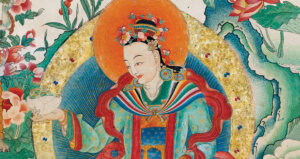
Yeshe Tsogyal: A Guide for Readers to the Dakini Princess

The Life and Visions of Yeshe Tsogyal
See Also: Dudjom Tersar | Longchen Nyingtig | Namcho & Palyul
___________________
Guru Rinpoche | Mandarava | Rongzompa | Longchenpa | Jigme Lingpa | Patrul Rinpoche |
Sera Khandro | Mipham Rinpoche | Dilgo Khyentse | Dudjom Rinpoche
The first Tibetan ever to attain complete enlightenment was in all probability the woman Yeshe Tsogyal, closest disciple of Padmasambhava, the master who introduced the Buddhist teachings to Tibet in the eighth century. The first three books below are not just biographies—and very different from each other both in emphasis as well as some of the events accounted for—but inspiring examples of how Buddha’s teaching may be practiced. Although these texts are of great antiquity, they nevertheless expresses a tradition that is still alive today and is an archetypal description of the teacher-disciple relationship. Yeshe Tsogyal follows the complete Buddhist path, including the Dzogchen teachings, and herself becomes a Guru of great power and wisdom. Passages of profound teachings are offset by episodes of exploit and adventure, spiritual endeavor, court intrigue, and personal encounter. Hers is a dramatic story, full of beauty and song, and offers an intimate glimpse of Tsogyal’s feelings, aspirations, hardships, and triumphs.
Biographical Accounts
Paperback | Ebook
$24.95 - Paperback
Lady of the Lotus-Born: The Life and Enlightenment of Yeshe Tsogyal
By Yeshe Tsogyal, Namkhai Nyingpo, and Gyalwa Changchub
Foreword by Jigme Khyentse Rinpoche
Translated by The Padmakara Translation Group
Lady of the Lotus-Born is a terma, or Dharma Treasure, written and concealed in the eighth century for future generations by the accomplished masters Namkhai Nyingpo and Gyalwa Changchub, the disciples of Padmasambhava and Yeshe Tsogyal. The text was discovered nearly a thousand years later in the seventeenth century by the Tertön (Dharma Treasure finder) Taksham Samten Lingpa, who, by interpreting the symbolic script of the dakinis (reproduced at the beginning of each chapter), revealed the text in its entirety as it has been handed down to us.
Paperback | Ebook
$24.95 - Paperback
The Life and Visions of Yeshe Tsogyal: The Autobiography of the Great Wisdom Queen
By Yeshe Tsogyal, rediscovered by Drime Kunga and Jamyang Khyentse Wangpo, and translated by Chonyi Drolma
Foreword by Dzongsar Khyentse Rinpoche
The many layers of the heroic life of Yeshé Tsogyal, Tibet’s best-known dakini and female master, are revealed in this inspiring work. Translated here for the first time, this terma, or “hidden treasure,” presents an outer narrative of her birth, family, and struggles in a traditional male-dominated society; an inner account of her meetings with the great master Padmasambhava; and a secret chronicle of her retreat at Chimpu and her visionary journey to Oddiyana. This accomplished translation is enriched by the refreshing insights of six contemporary scholars and teachers of Tibetan Buddhism, making this invaluable guide to the life of Yeshé Tsogyal a treasure for practitioners, scholars, and anyone intent on the possibility of awakening.
You can read a piece from the book Judith Simmer-Brown wrote here.
Sky Dancer: The Secret Life and Songs of the Lady Yeshe Tsogyel
By Taksham Nuden Dorje, translated by Keith Dowman
Foreword by Thinley Norbu Rinpoche
Another terma text is this extraordinary work, discovered by Taksham Nuden Dorje n the seventeenth century.
An Thinley Norbu Rinpoche says in the foreword,
Those who read the biography of the supreme tantric master, Padma Sambhava, and his Consort, Yeshe Tsogyal, have the chance to identify with them, and those who cultivate the inner wisdom Dakini:, the root Dakini:, progress towards becoming the supreme Sky Dancer, incomprehensible feminine wisdom,
the lover without motive.
and
In the dharmakaya's stainless space Yeshe Tsogyel is Kuntuzangmo, infinite and noble femininity itself. These names and qualities are no more than
indications of the nature of the dharmakaya which can never be contained in, or identified by, concepts. Sambhogakaya is the
glowing awareness of the dharmakaya, where the Five Buddhas and their Consorts appear as unobstructed luminous space-form. As the feminine aspect in the sambhogakaya, Yeshe Tsogyal is the Five Wisdom-Consorts.
Books Related to Khandro Yeshe Tsogyal
Paperback | Ebook
$24.95 - Paperback
by Nyoshul Khen Rinpoche
Translated and introduced by David Christiansen
Nyoshul Khen Rinpoche was one of the most important teachers of the 20th century - an important teacher to some of the best living teachers. In the pages of this book, Yeshe Tsogyal appears throughout. Here is one section:
At present we are practicing the meditation deity in the form of the dakini, from the terma treasure teachings of the second Dudjom Rinpoche, Jigdral Yeshe Dorje (1904–87). It is a teaching that has been revealed specifically for the benefit of beings in this dark age. This practice stems from the compassion of the three jewels and the blessings and aspirations of the buddhas and is an actual method to accomplish Guru Padmasambhava’s consort Yeshe Tsogyal. The dakini Yeshe Tsogyal is the nirmanakaya emanation of dharmadhatu Samantabhadri, the consort of the dharmakaya buddha Samantabhadra, who is the female aspect of the ultimate deity (don gyi lha).
In order to help us realize this state for ourselves, through the power, blessings, and aspirations of Buddha Samantabhadra and consort, the dakini Yeshe Tsogyal arises as their actual manifestation and is born into this world. Yeshe Tsogyal was blessed and taught by Guru Padmasambhava and as part of her various enlightened activities, she wrote down and transmitted a method to follow her and accomplish the essence of her awareness wisdom (rig pa’i ye shes kyi ngo bo). Thus we have the practice of Yeshe Tsogyal as a yidam or meditation deity.
Paperback | Ebook
$28.95 - Paperback
A Cascading Waterfall of Nectar
To call Cascading Waterfall a book on the preliminary practices is a bit like calling the Mt. Everest a hill. Coming from the vast wisdom mind of Longchenpa's emanation in our age, it is an indespensible guide to the path. And Yeshe Tsogyal, who Rinpoche describes as Kuntuzangmo appearing in form, appears throughout.
Rinpoche includes a translation of Mipham Rinpoche's prayer to Yeshe Tsogyal, The Longing Melody of Faith.
And the second part of the book is a commentary on the meaning of “The Continuously Blossoming Rosary of the Lotus Assembly Palace” called The Light Rays of the Youthful Sun and Rinpoche offers us many teachings on the Great Exaltation Queen Yeshe Tsogyal who features in the prayer.
Paperback | Ebook
$24.95 - Paperback
Inseparable across Lifetimes: The Lives and Love Letters of the Tibetan Visionaries Namtrul Rinpoche and Khandro Tāre Lhamo
By Namtrul Jigme Phuntsok and Khandro Tare Lhamo
Introduced and translated by Holly Gayley
Namtrul Jigme Phuntsok and Khandro Tare Lhamo were an extraordinary 20th century terton visionaries as the translations of love letters. Tare Lhamo is widely considered an emanation of Yeshe Tsogyal and this connection appears throughout Gayley's introduction as well as the letters themselves.
The letters are poetic, affectionate, and prophetic, articulating a hopeful vision of renewal that drew on their past lives together and led to their twenty-year partnership. This couple played a significant role in restoring Buddhism in the region of Golok once China’s revolutionary fervor gave way to reform.
Paperback | Ebook
$34.95 - Paperback
Light of Fearless Indestructible Wisdom: The Life and Legacy of His Holiness Dudjom Rinpoche
By Khenpo Tsewang Dongyal
This biography of Dudjom Rinpoche references Yeshe Tsogyal throughout. It includes the Seventh Heap of Lightbeams which a brief explanation of Kyabje Rinpoche’s enthronement as a great tertön and regent of Guru Padmasambhava and of how Guru Rinpoche and wisdom dakini Yeshe Tsogyal entrusted him with terma. Kenpo Tsewang also shares how in some terms teachings terma teachings it says that Guru Padmasambhava and Yeshe Tsogyal reincarnated together in the form of His Holiness Dudjom Rinpoche, so that he was their actual presence—only the body was different.
Paperback | Ebook
$39.95 - Paperback
This is a classic of scholarship on the Dakini principle from the point of view of a practitioner. Yeshe Togyal is discussed and referenced throughout. Here is a sample:
As for her inner dimension, Yeshe Tsogyal was remarkable because she was not merely a mortal; in her dynamic nature she was a tantric Buddhist meditational deity. She is called Sarasvati (Yangchenma), the great female bodhisattva of learning, culture, and music, the peaceful consort of Manjusri, who carries a lute that serves as her symbol. Sarasvati is also called Vakisvari, (Ngawang Lhamo) or ‘‘lady of speech’’ for her connection with seed syllables, music, utterance, and poetry. She is the dakini of the mirrorlike wisdom, and the ‘‘white-cloaked lady’’ (Ko Karmo) who is dakini of inner heat in the yogic practice of tummo. It is said that Yeshe Tsogyal was Sarasvati in her previous life.
Yeshe Tsogyal in her visionary dimension was the radiant White Tara (Drolma Karmo) the savior who, with her compassionate seven eyes, attends to the health and welfare of beings in all quarters. In another manifestation, she was Vajrayogini or Vajravarahi, who are two aspects of the most important dakini in the Tibetan tantric system. Vajrayogini is a semiwrathful deity, depicted as red and dancing, wearing bone ornaments; she is the most expressive of the qualities of wakefulness, the personification
of the widsom-mind itself. In her alternate identity as Vajravarahi she is the ‘‘Vajra Sow,’’ the manifestation of the nonconceptual quality of the mind, who severs thought with her hooked knife
Additional Resources

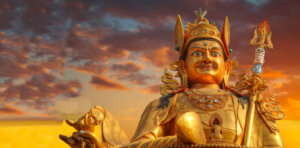
Padmasambhava: A Reader's Guide to Guru Rinpoche

Some Nyingma Lineages: Dudjom Tersar | Longchen Nyingtig | Namcho & Palyul
Guides to Other Important Nyingma Figures:
Rongzompa | Longchenpa | Jigme Lingpa | Patrul Rinpoche |
Sera Khandro | Mipham Rinpoche | Dilgo Khyentse | Dudjom Rinpoche
We begin this Reader’s Guide to Guru Rinpoche, also known as Padmasambhava, with some trepidation, as it is a delicate task to try and write a short article on a figure so central to the Tibetan Buddhist tradition and so revered by many, whose life and legacy are so rich. The attempt feels deficient, yet there are some great resources for practitioners that are important to highlight. Also, so many termas, or rediscovered treasures are in fact from Guru Rinpoche, that excluding them feels a bit odd but to include them would be overwhelming. In fact, there are few books in the Nyingma tradition where Guru Rinpoche is not a central figure.
This guide presumes readers already have a basic understanding of Guru Rinpoche, and how he is an historical figure and saint, considered a Buddha as well a focus of meditation in the form of the Guru, and the source of an incredible corpus of teachings.
Biographical Accounts
Hardcover | Ebook
$28.95 - Hardcover
Guru Rinpoche: His Life and Times
Introduced and translated by Ngawang Zangpo
The first half of the book includes six chapters where Ngawang Zangpo lays out an important framework for understanding Guru Rinpoche's impact and the mileiu he entered on his arrival to Tibet. These include:
- Buddhism, History, and the Truth
- Buddhist History after the Buddha
- Tibet and Asia on the Eve of Guru Rinpoché’s Arrival
- India in Guru Rinpoché’s Era
- Guru Rinpoché Now—in Print
- Timeless Guru Rinpoché and Wisdom Bridges to the Present
There are many account of Guru Rinpoche's life, and the second half of the book is collection of vitally important accounts about his life is an invaluable resource.
- A Biography of Guru Rinpoche by Jamgon Kongtrul
- The Immaculate White Lotus by Dorje Tso
- The Indian Version of the Life of Guru Rinpoche by Taranata
- The Bön Version of the Life of Guru Rinpoche by Jamyong Kyentse Wongpo
- Supplications to Guru Rinpoche in Seven Chapters by Guru Rinpoche
- Visualizations to Accompany the Supplications by Jamgon Kongtrul
Paperback | Ebook
$21.95 - Paperback
Crazy Wisdom
This fascinating book examines the life of Padmasambhava to illustrate the principle of "crazy wisdom". From this profound point of view, spiritual practice does not provide comfortable answers to pain or confusion. On the contrary, painful emotions can be appreciated as a challenging opportunity for new discovery. In particular, the author discusses meditation as a practical way to uncover one's own innate wisdom.
He uses the model of the Eight Names (or aspects of manifestations) of Guru Rinpoche, and goes through each in detail.
Trungpa Rinpoche makes a strong case that those in the west need Padmasabhava as badly as the savage and uncultured Tibetans of the eighth century.
Hardbound | Ebook
$21.95 - Hardcover
The Magical Life of the Lotus-Born
By Sherab Chodzin Kohn, illustrated by Thinley Dorji
Explore a fresh telling of the inspiring, mysterious, and magical life of the great master Padmasambhava—the Lotus-Born—who planted the seed of Buddhism in Tibet that is still blossoming today, beautifully illustrated for ages 10+.
Here, his magical life story is outlined in colorful and captivating detail, offering young readers a rare glimpse into his fierce adventures and battles that transformed Tibet, a land of malevolent spirits and wild folk, into a fertile ground for Buddhism. The rich and vibrant spiritual tradition that resulted in Tibet has thrived for over one thousand years. This timeless tale is sure to capture the imagination of future generations, just as the oral, theatrical, and written accounts of it have in the Himalayas for centuries.
The Seven Line Prayer
The Seven-Line prayer to Guru Rinpoche is one of the most ubiquitous and important prayers, performed across lineages and in particular the Nyingma tradition who commence nearly every practice with it and for which there are dedicated sadhanas based on it. Below are several of the books about it.
Visit our page dedicated to resources about the famed Seven Line Prayer
$18.95 - Paperback
Works and Practices Related to Padmasambhava
Hardcover | Ebook
$22.95 - Hardcover
A Garland of Views: A Guide to View, Meditation, and Result in the Nine Vehicles
by Padmasambhava and Mipham Rinpoche
A Garland of Views presents both a concise commentary by the eighth-century Indian Buddhist master Padmasambhava on a chapter from the Guhyagarbha Tantra on the different Buddhist and non-Buddhist philosophical views, including the Great Perfection (Dzogchen), and an explicative commentary on Padmasambhava’s text by the nineteenth-century scholar Jamgön Mipham (1846–1912).
Padmasambhava’s text is a core text of the Nyingma tradition because it provides the basis for the system of nine vehicles (three sutra vehicles and six tantra vehicles) that subsequently became the accepted way of classifying the different Buddhist paths in the Nyingma tradition.
Padmakara Translation Group translator Stephen Gethin on Garland of Views
Audiobook Sample
Audiobook (read by British actor Simon Callow)
$24.99 - Digital Audio
Paperback | Ebook
$21.95 - Paperback
A Practice of Padmasambhava: Essential Instructions on the Path to Awakening
A Practice of Padmasambhava presents two practical and compelling works related to a visualization and mantra practice of Padmasambhava. This practice is based on the most important revelation of the renowned nineteenth-century treasure revealer Chokgyur Lingpa, Accomplishing the Guru's Mind: Dispeller of All Obstacles. These two works give an introduction to the preliminary trainings, outline the primary elements of visualization practice and mantra recitation, and supply a detailed explanation of the practice of Padmasambhava's wisdom aspect, Guru Vadisimha. Through practical step-by-step instructions on this deity, the reader is guided into the general world of tantric practice common to all of Tibetan Buddhism.
Paperback | Ebook
$29.95 - Paperback
The Copper-Colored Mountain: Jigme Lingpa on Rebirth in Padmasambhava’s Pure Land
By Jigme Lingpa, George Halkias, and Christina Partsalaki
The Copper-Colored Mountain is the pure land of Padmasambhava, the Indian master who brought Buddhism to Tibet. One way in which Buddhist practitioners may be reborn in this pure land is by making aspiration prayers. This work includes a translation of one of the most famous of these aspiration prayers, composed by Jigme Lingpa, and the authors’ verse-by-verse analysis of it. Drawing on both traditional commentaries and contemporary scholarly texts, the authors show how Jigme Lingpa encodes many features of Tibetan Buddhist tantric practice in these verses, and thus they provide a feast of meaning for tantric practitioners.
Paperback | Ebook
$18.95 - Paperback
Secret Teachings of Padmasambhava: Essential Instructions on Mastering the Energies of Life
By Padmasambhava, translated by Kennard Lipman
Translations of several short but important texts on Innermost Essence of the Dakini (Khadro Nyingtig).
These two teachings of Padmasambhava, The Fivefold Essential Instruction and A Section of Hidden Instruction, the Innermost Essence of the Dakini, are certainly of interest to the serious practitioner of the Vajrayana. They not only present well-known tantric teachings of channels (tsa), energy (lung), and potencies (tigle) in a clear and practical way, but they also offer us a unique Dzogchen perspective on them. In addition, they give us a glimpse into life on retreat with two of the greatest masters of Tibetan Buddhism, Padmasambhava and Yeshe Tsogyal.
Paperback | Ebook
$16.95 - Paperback
The Tibetan Book of the Dead: The Great Liberation through Hearing in the Bardo
By Padmasambhava, Karma Lingpa. Translated and introduced by Chögyam Trungpa and Francesca Freemantle
Written by Guru Rinpoche, rediscovered as a terma by Karma Lingpa, and translated and introduced by Chögyam Trungpa and Francesca Freemantle, this work is traditionally read aloud to the dying to help them attain liberation—death and rebirth are seen as a process that provides an opportunity to recognize the true nature of mind. This translation of The Tibetan Book of the Dead emphasizes the practical advice that the book offers to the living. The insightful commentary by Chögyam Trungpa, written in clear, concise language, explains what the text teaches us about human psychology.
Paperback | Ebook
$24.95 - Paperback
Self-Liberation through Seeing with Naked Awareness
By Padmasambhava, Karma Lingpa, and John Myrdhin Reynolds
Teaching the attainment of Buddhahood in a single lifetime, this text was written and concealed by Guru Padmasambhava in the eighth century and rediscovered six centuries later by Karma Lingpa. The commentary by the translator is based on the oral teachings of Namkhai Norbu Rinpoche and Lama Tharchin Rinpoche.
Paperback | Ebook
$29.95 - Paperback
Gesar: Tantric Practices of the Tibetan Warrior King
By Mipham Rinpoche, Orgyen Tobgyal Rinpoche, Chogyam Trungpa. Introduced and translated by Gyurme Avertin
The King, protector, and deity Gesar of Ling is intimately connected with Guru Rinpoche. In his Garland of Jewels, Mipham Rinpoche explains that "The lords of the three families are Manjushri, Avalokiteshvara, and Vajrapani; their magical manifestation is Guru Rinpoche; and his emanation is Gesar Norbu Dradul. As Gesar prayers often specify, the 'emanation of Padma and the three families, Great Lion Gesar." This work explains the connection in several sections.
Orgyen Tobgyal relates:
Basically, the deity Gesar doesn’t exist; he is simply Guru Rinpoche in the form of a drala—a form he takes to help raise the windhorse of sentient beings. Guru Rinpoche is also the embodiment of the enlightened qualities of all the buddhas. His enlightened activities are unfathomable, but a small fraction took place in the Land of Ling, 'the awe-inspiring Ma valley' in Kham—this is what it’s called in all the stories written about Gesar.
Books on Some of Guru Rinpoche's Contemporaries
$34.95 - Paperback
By: Gyalwa Changchub & Namkhai Nyingpo & Padmakara Translation Group
The Life and Visions of Yeshe Tsogyal
$24.95 - Paperback
By: Chonyi Drolma & Dzongsar Jamyang Khyentse & Drime Kunga & Yeshe Tsogyal
We also encourage readers to explore the excellent series of books on Padmasambhava, Following in Your Footsteps, published by Rangjung Yeshe Publications.
Additional Resources


